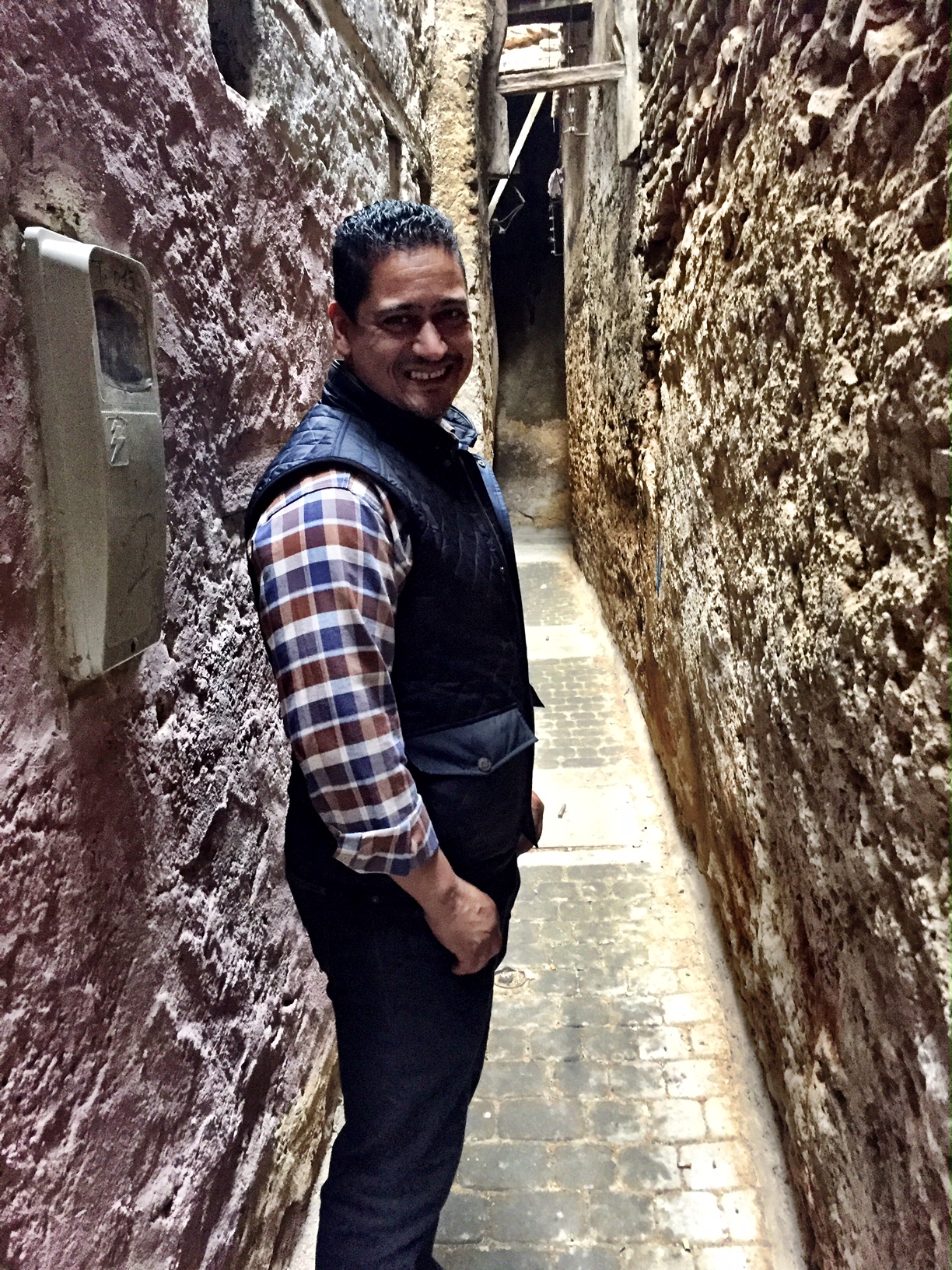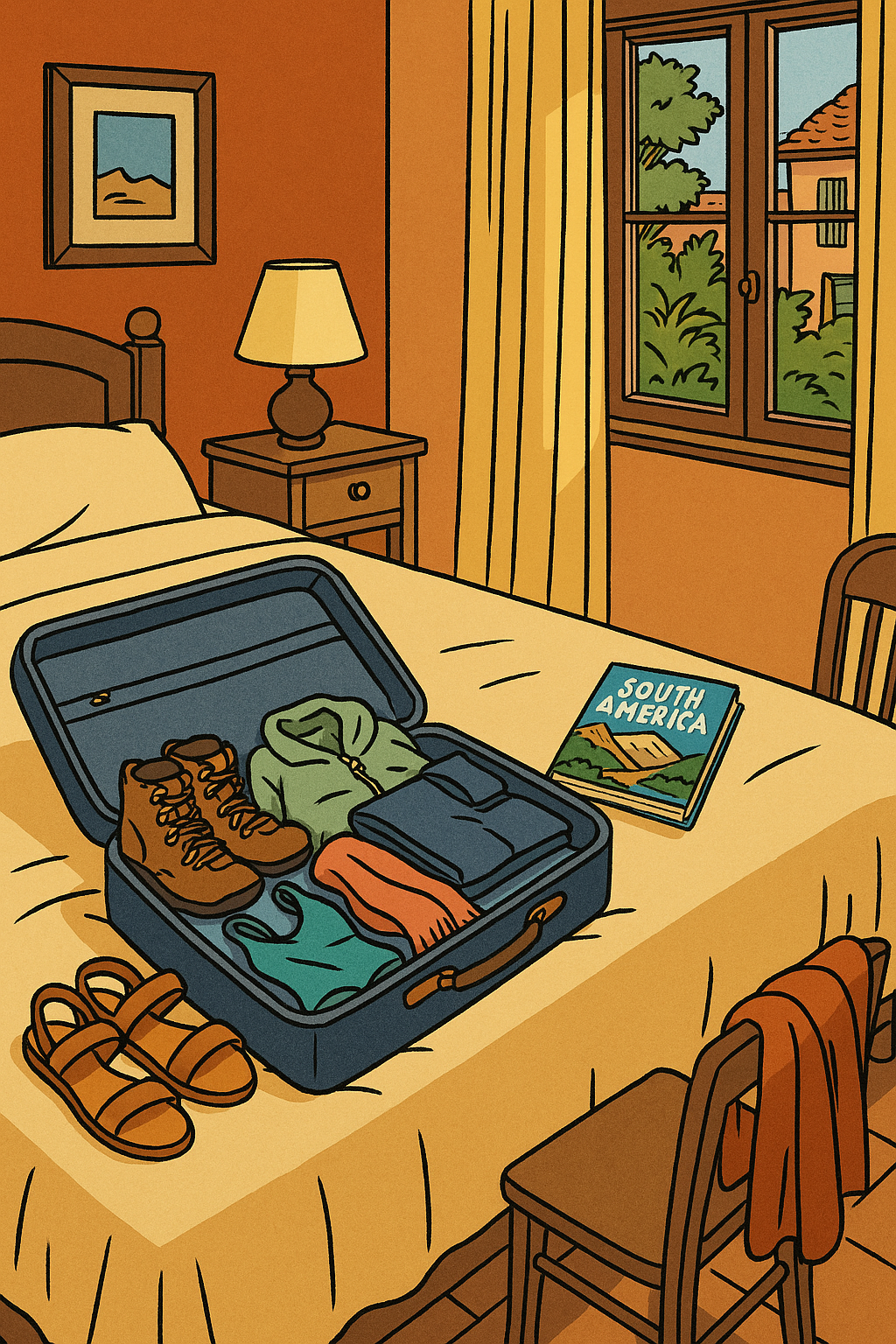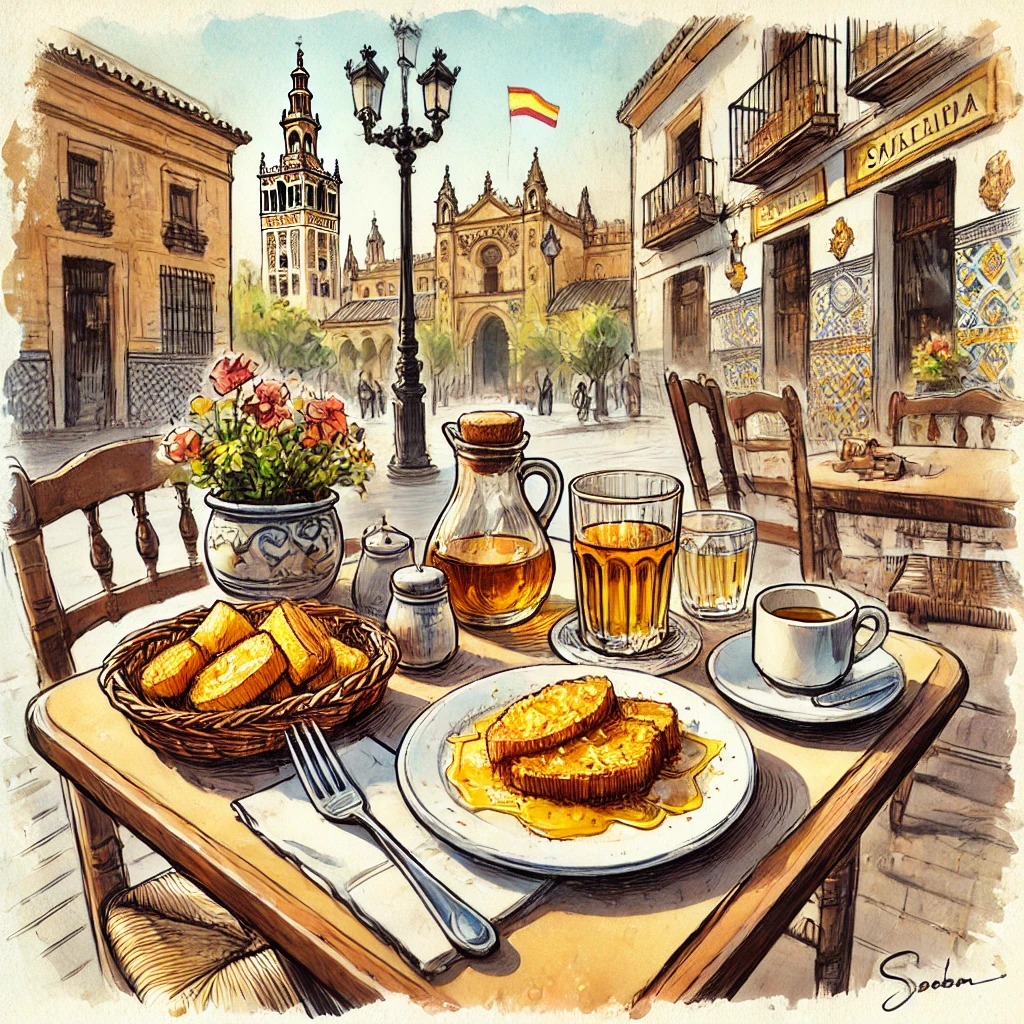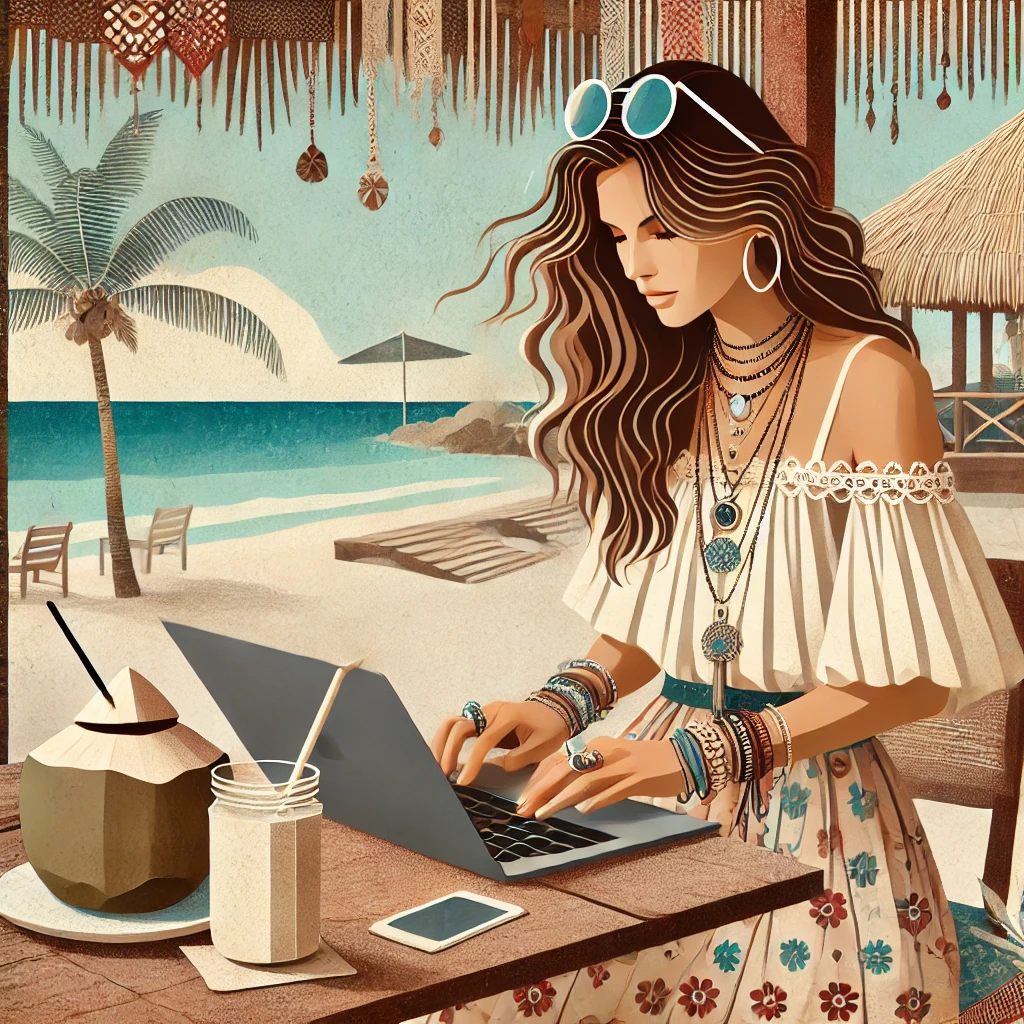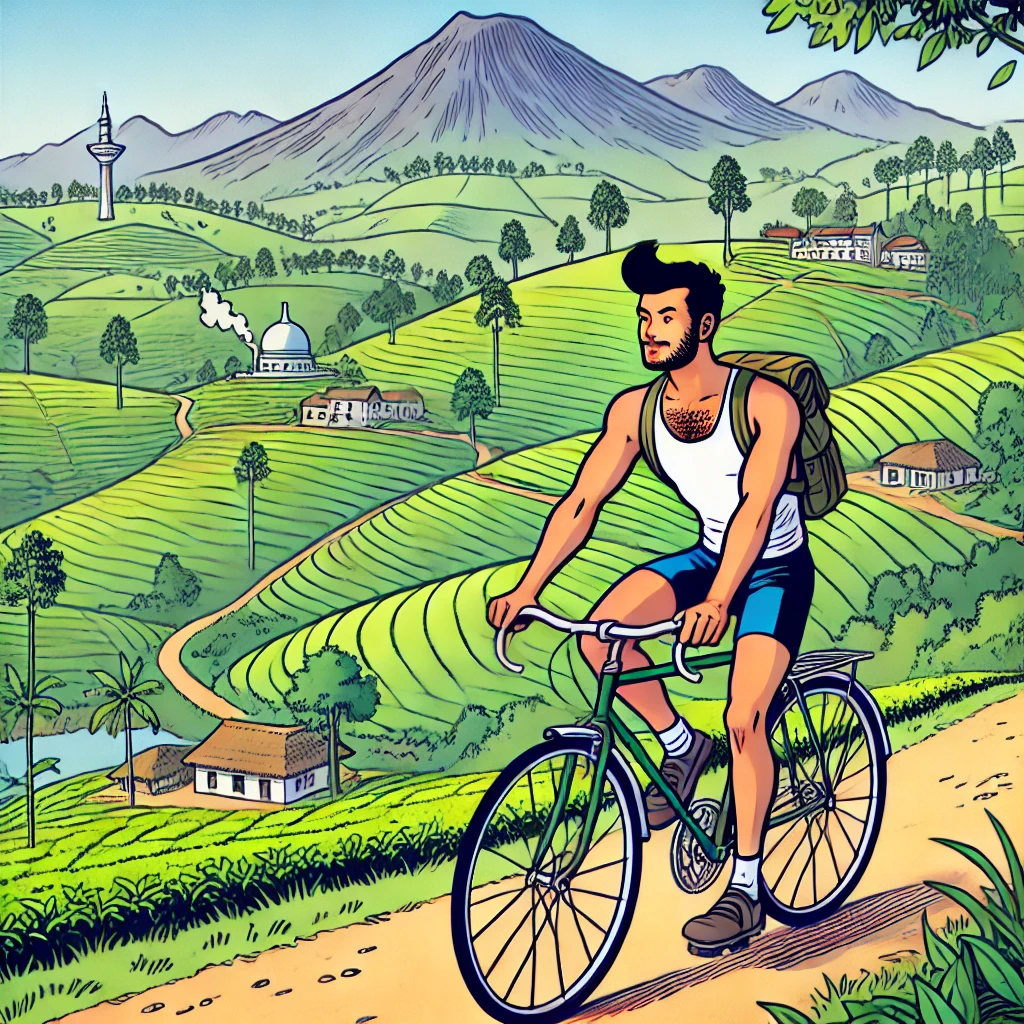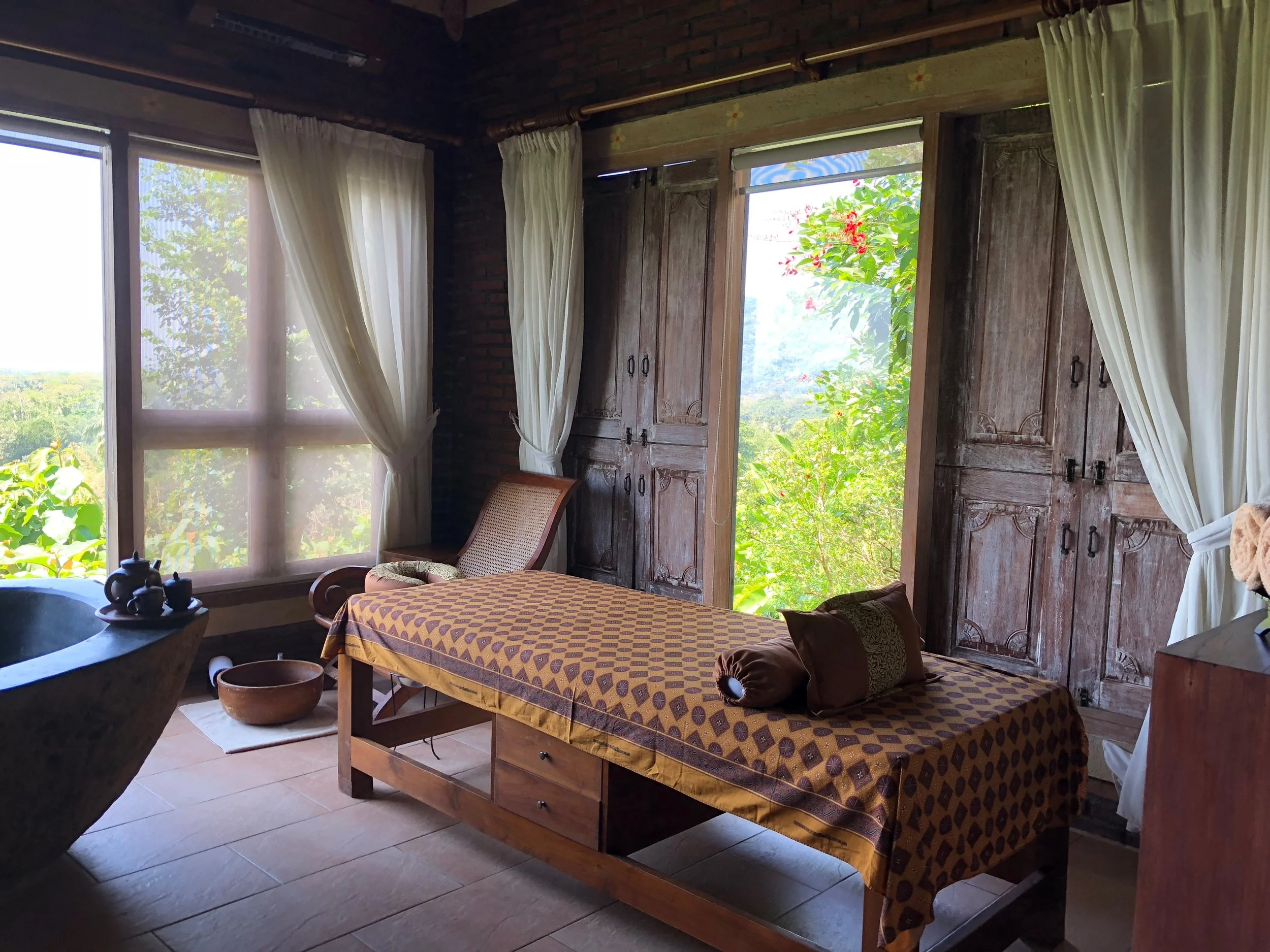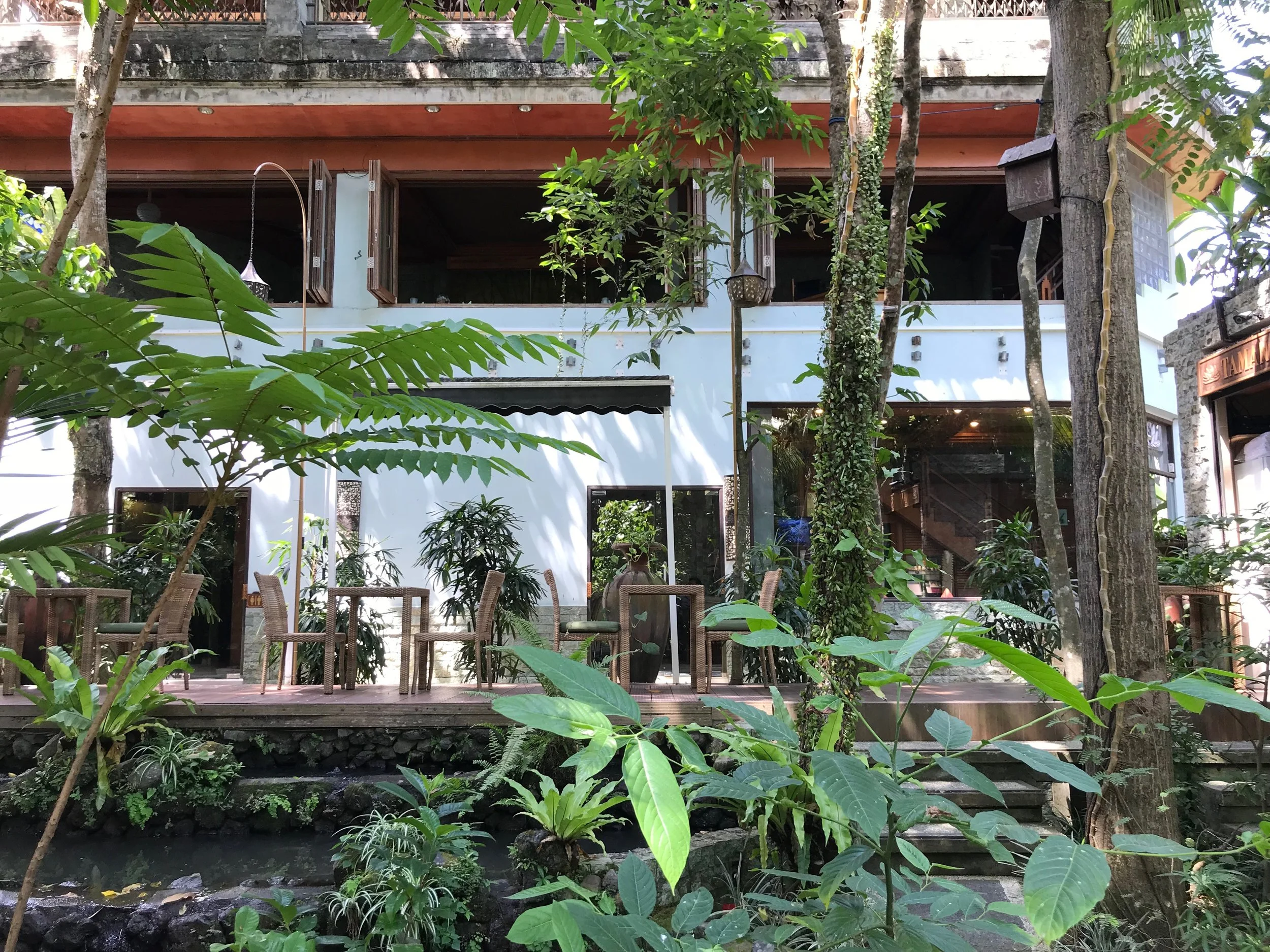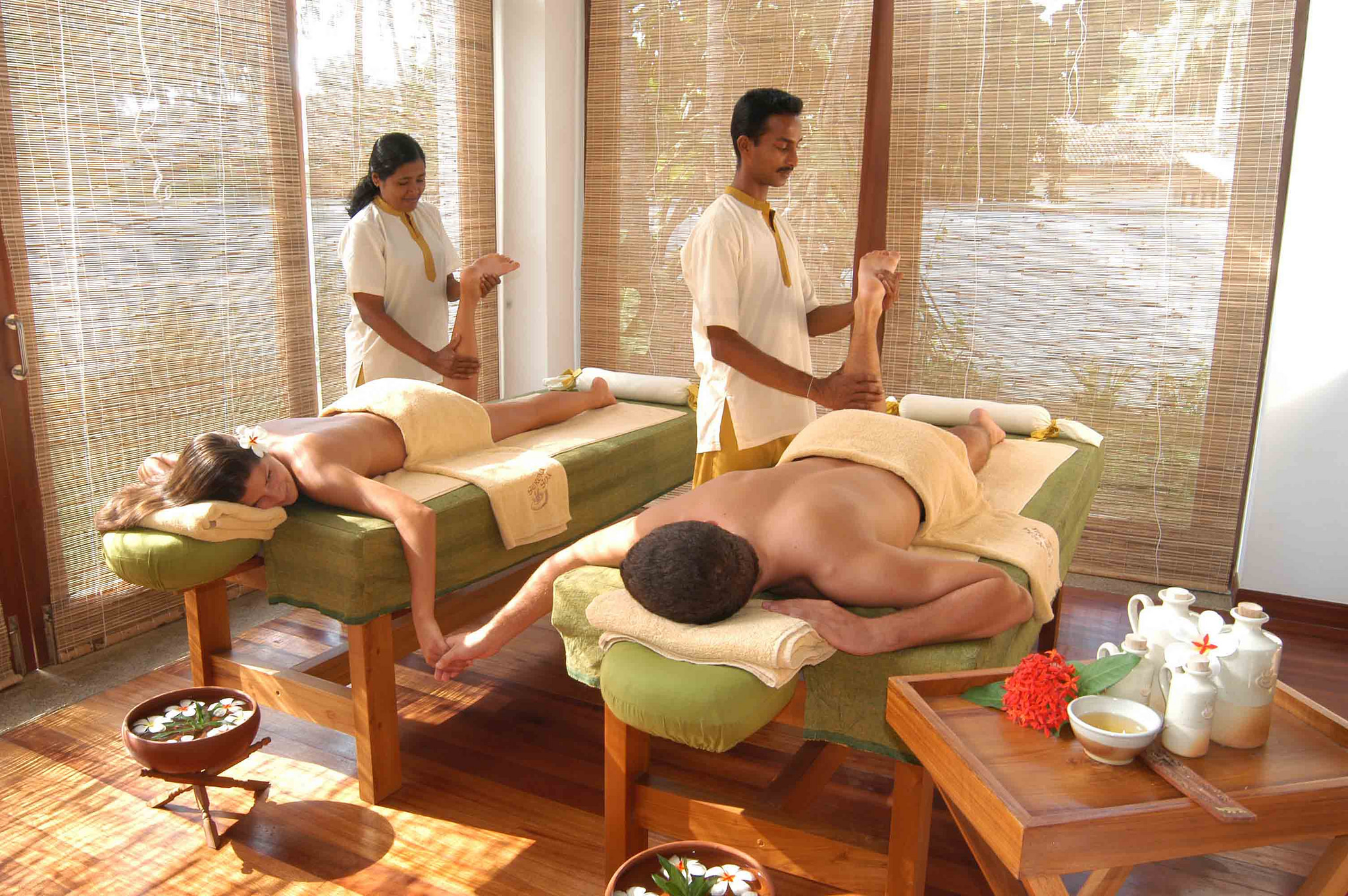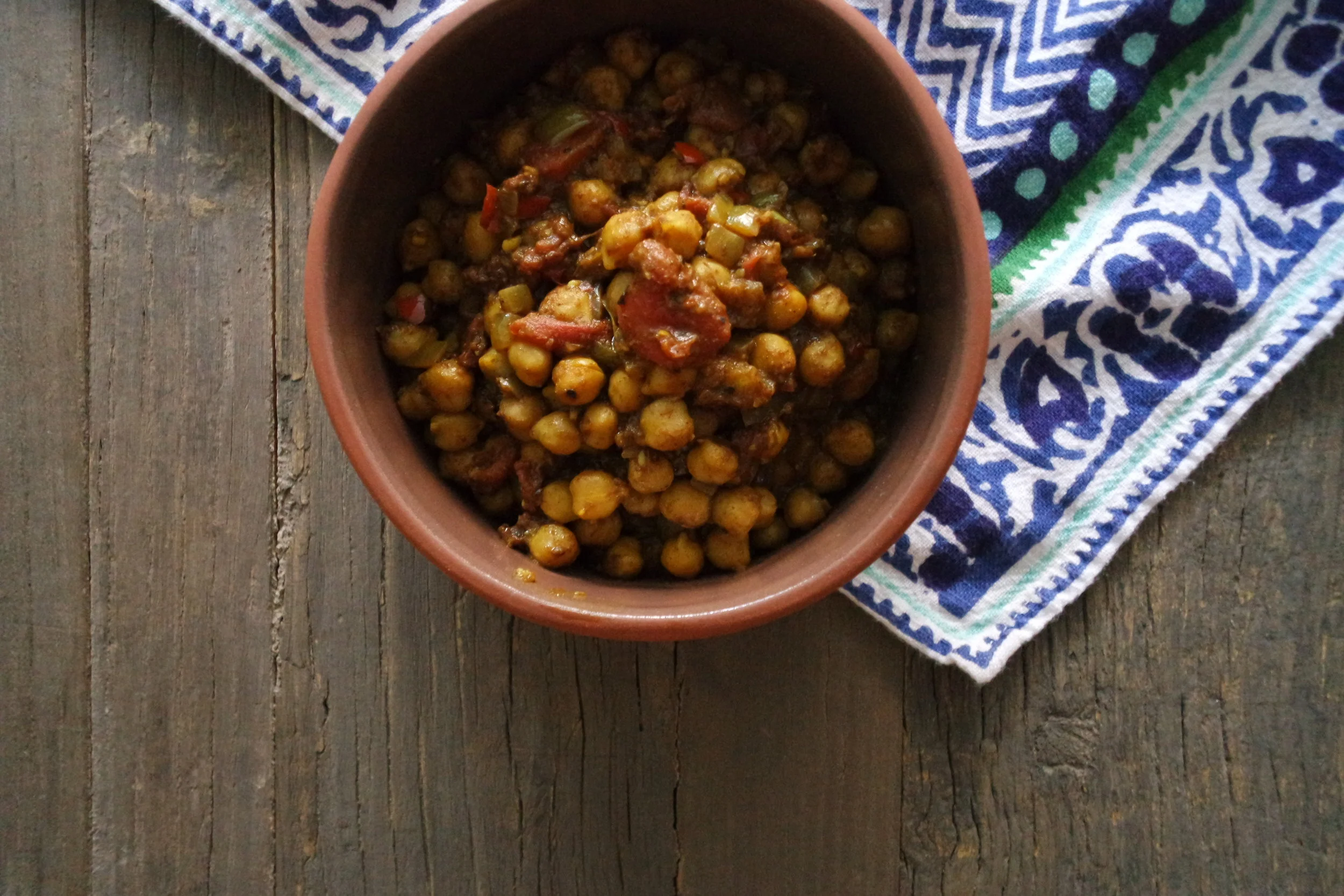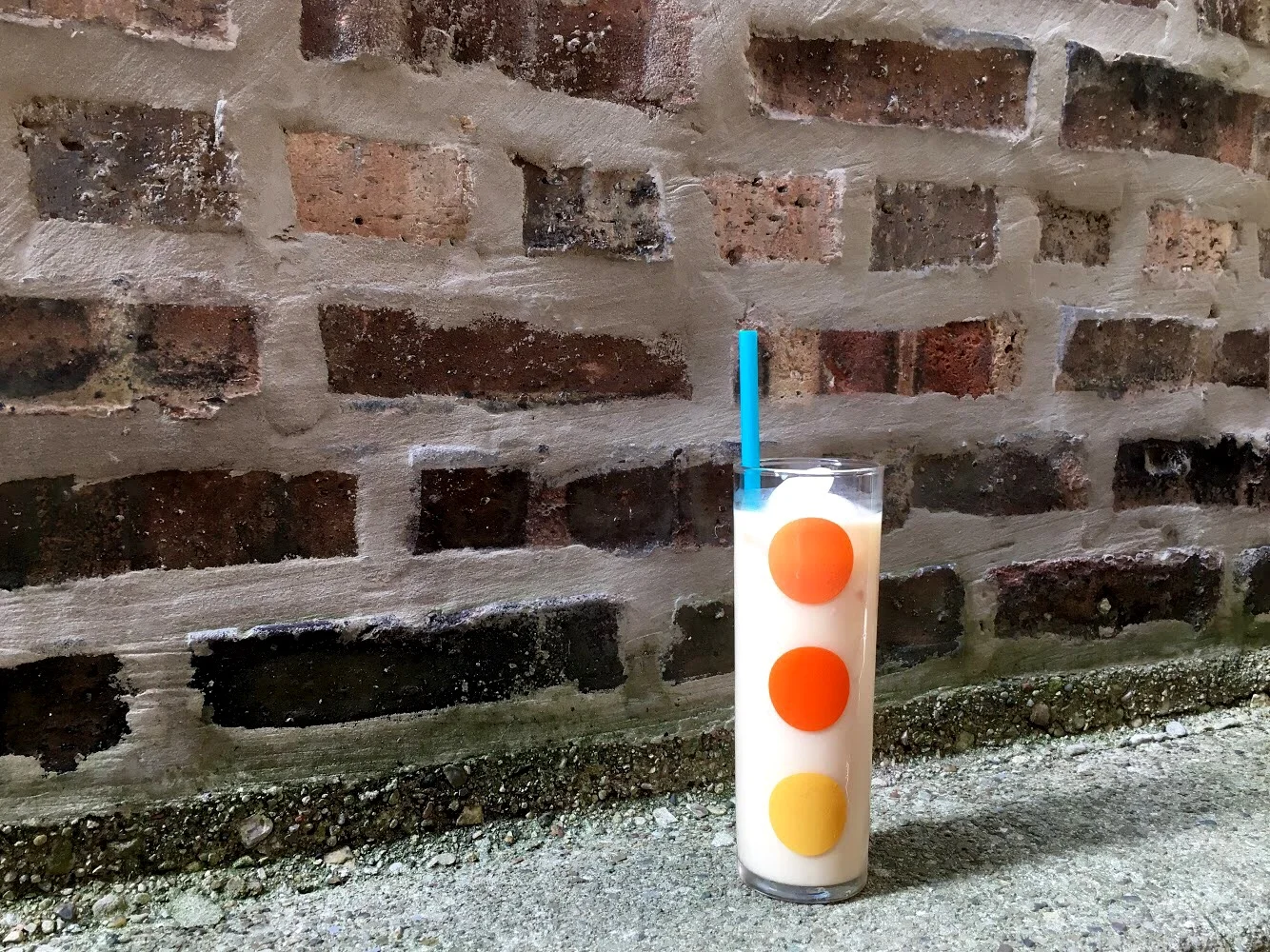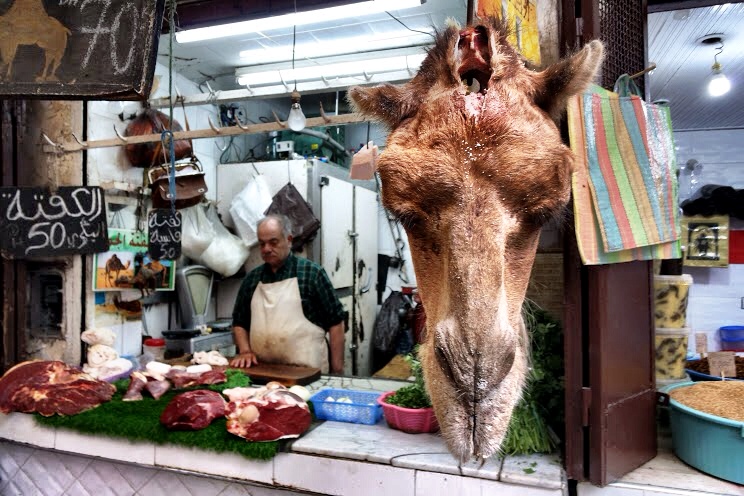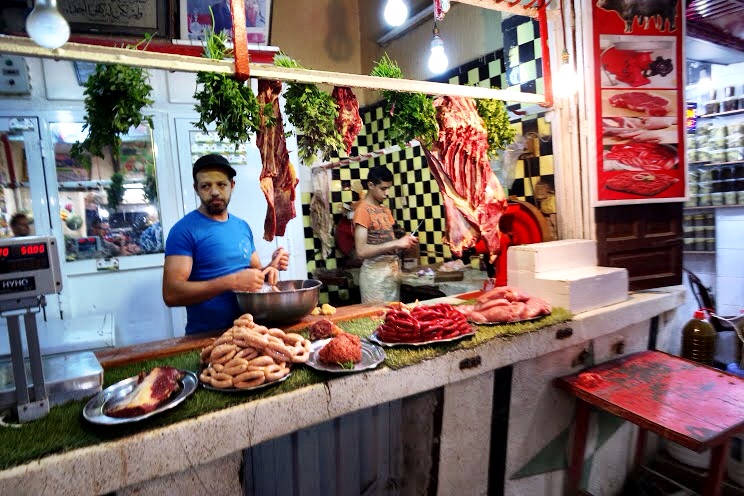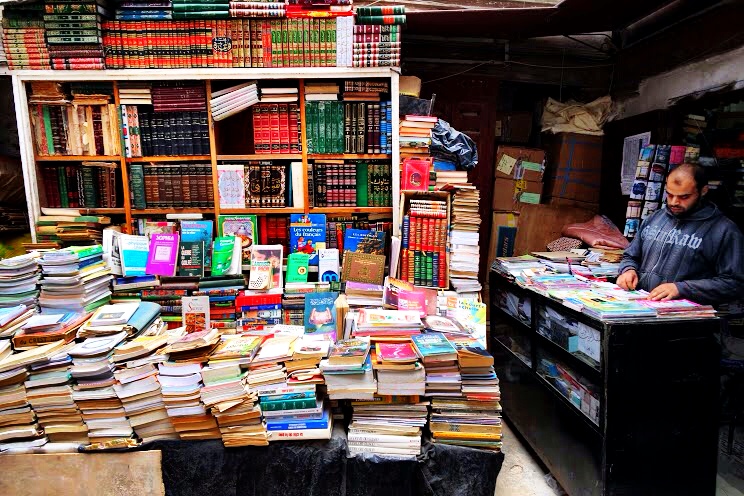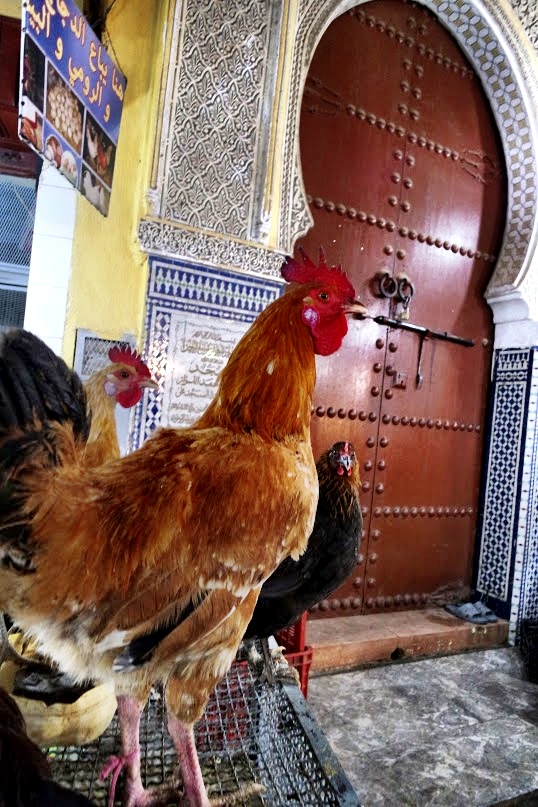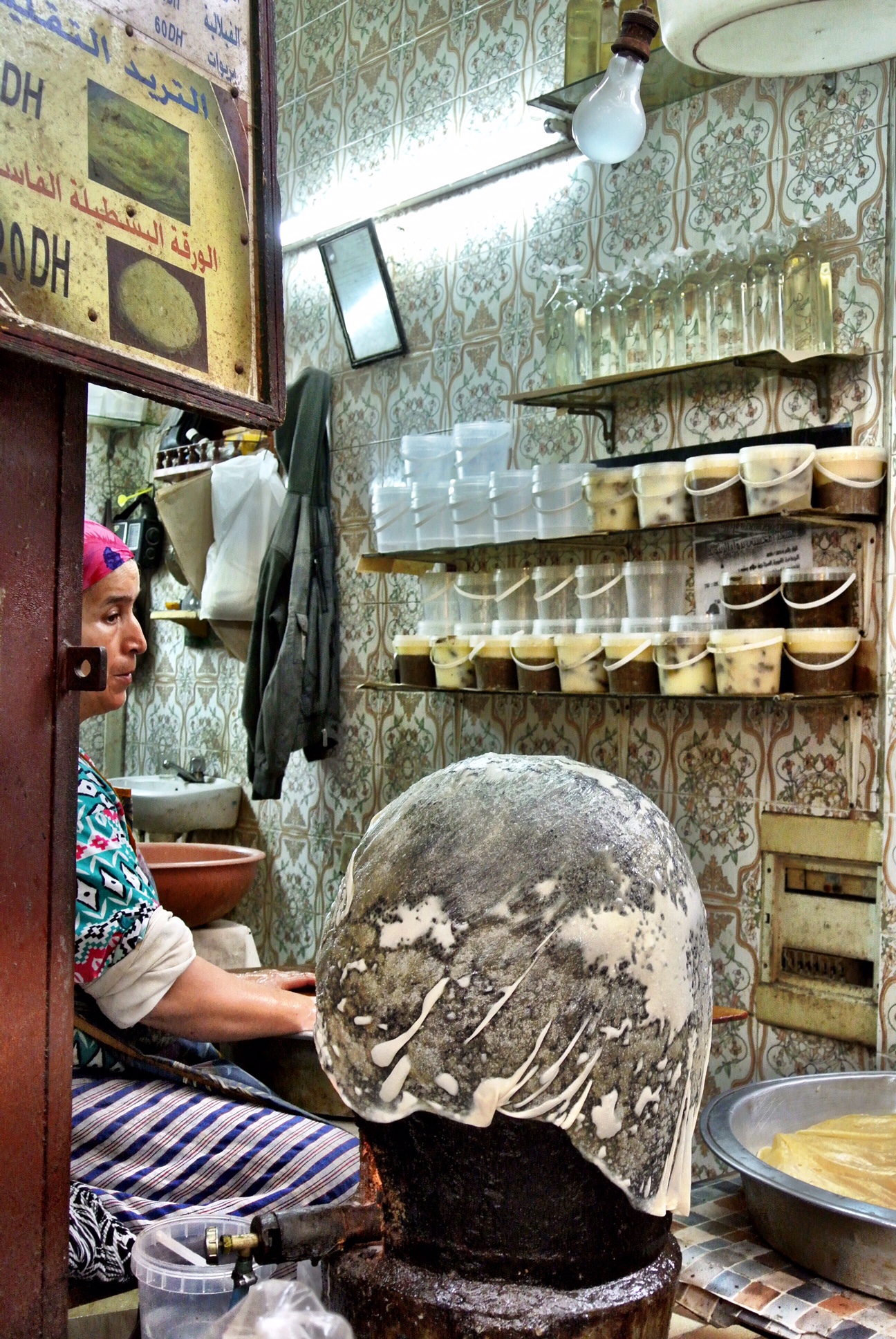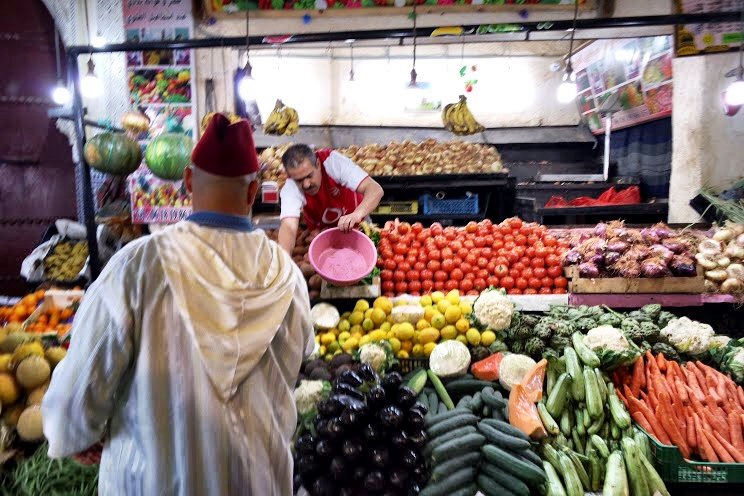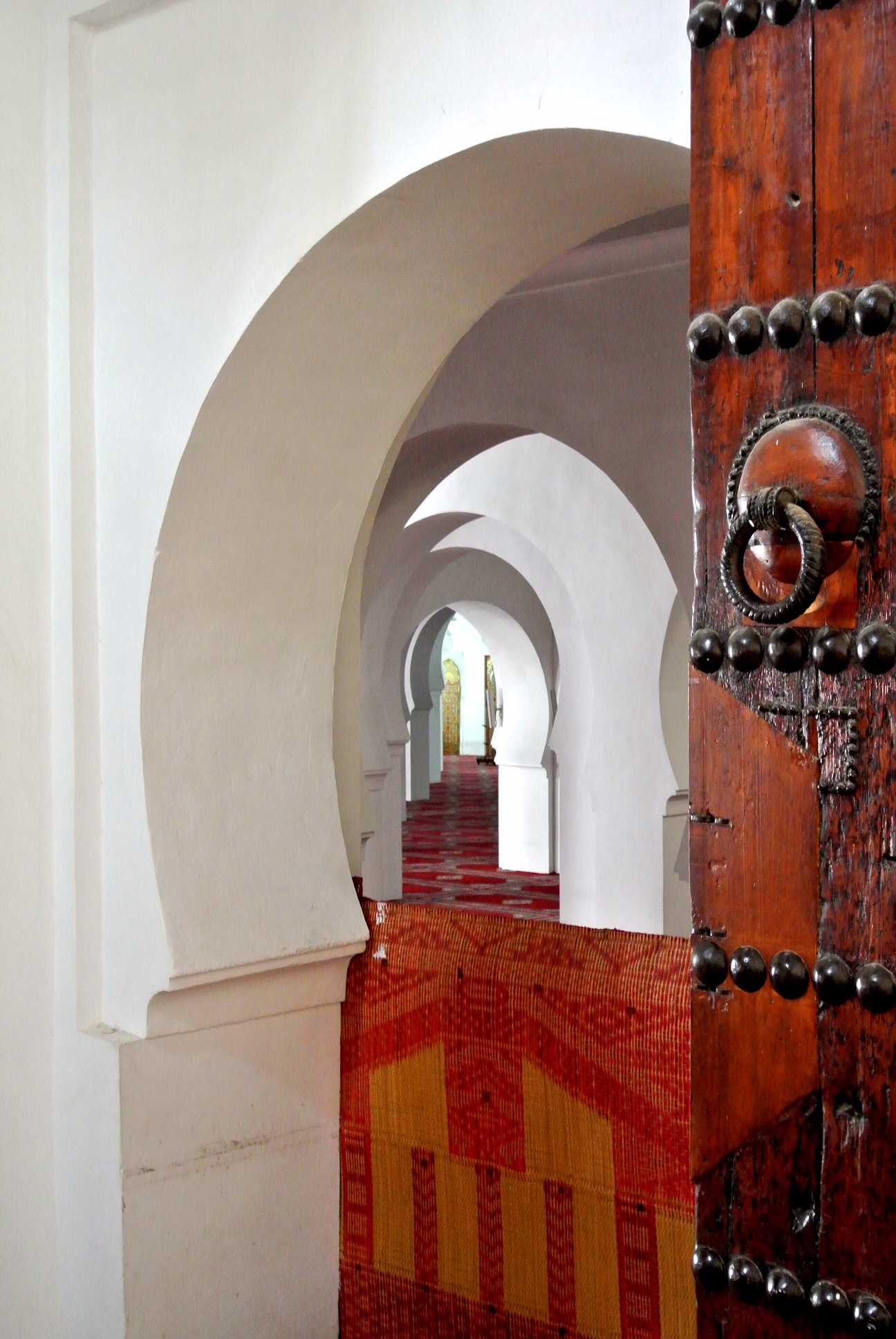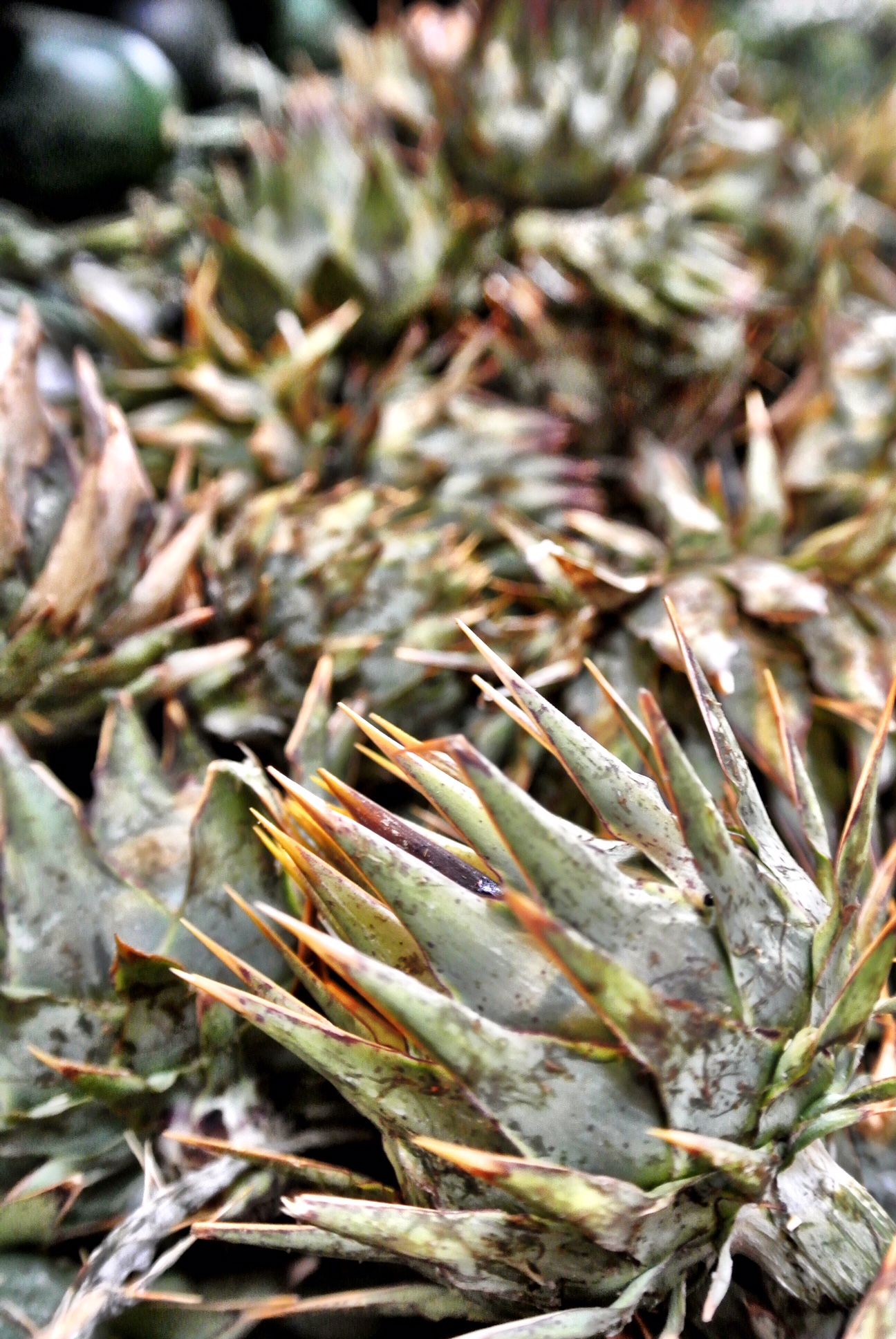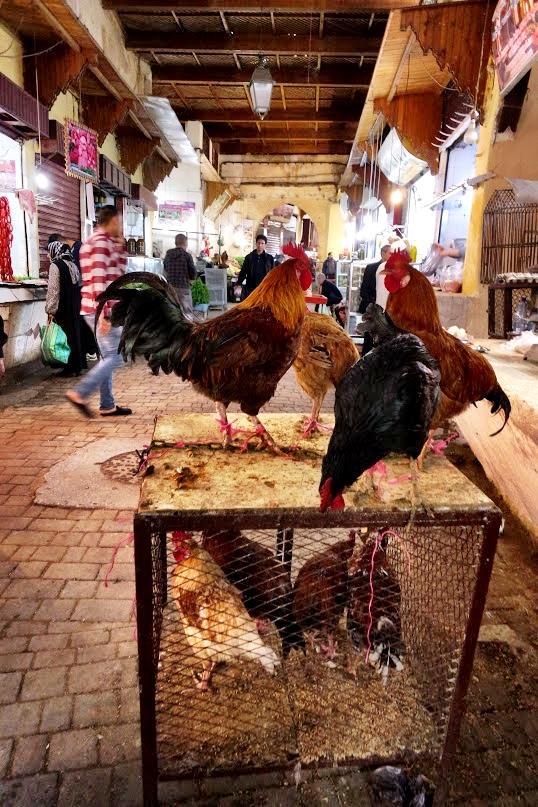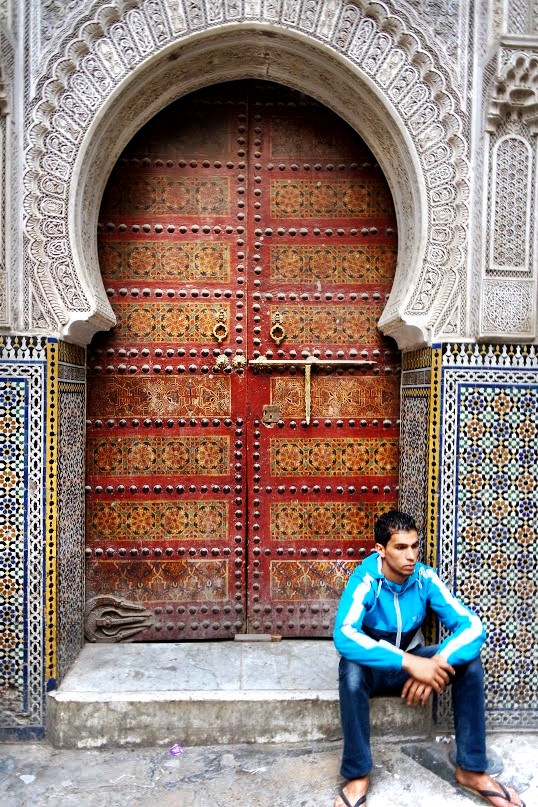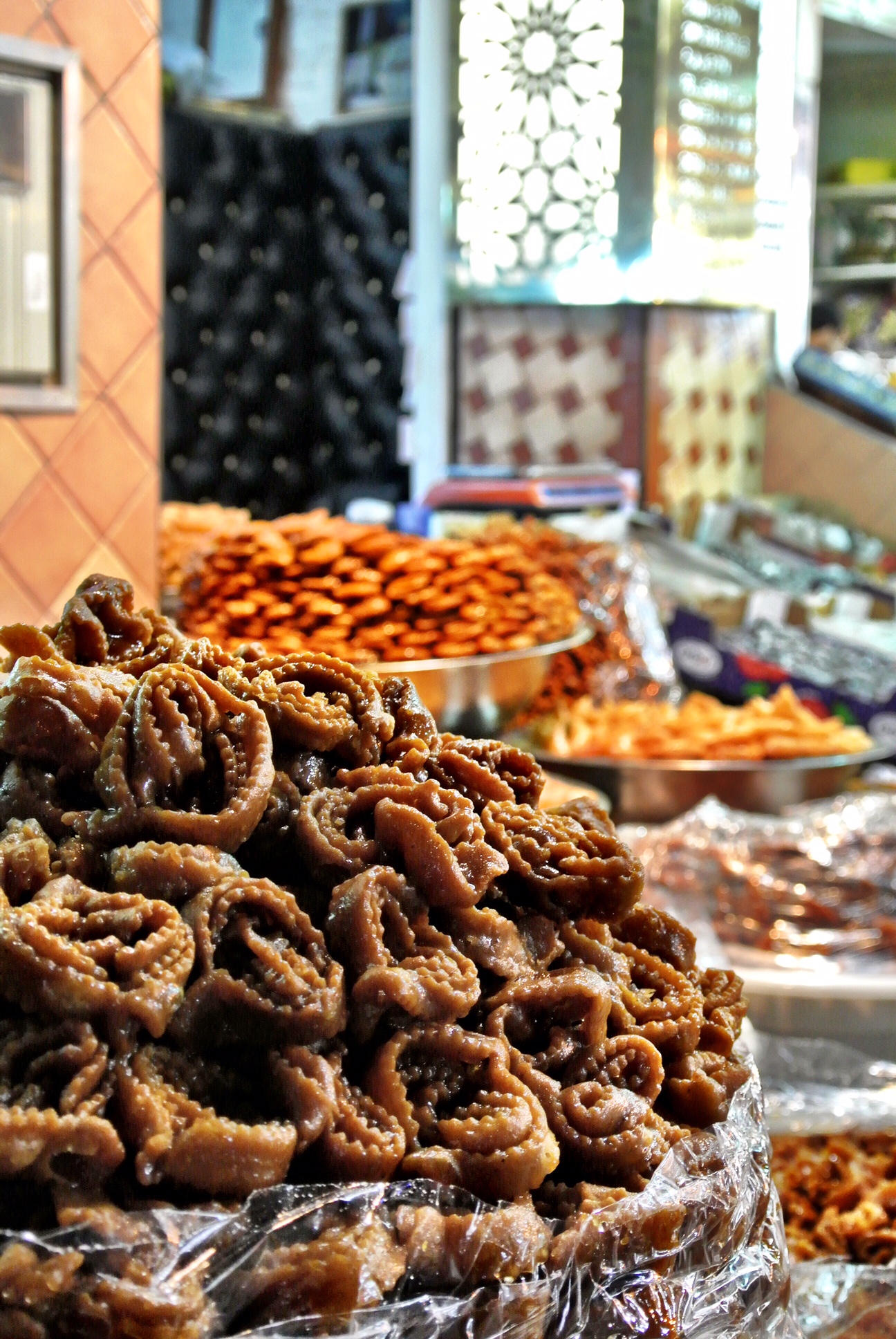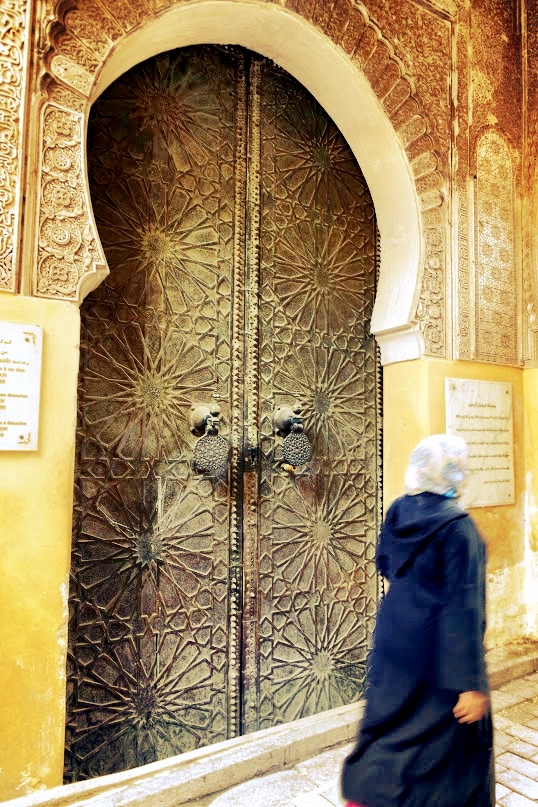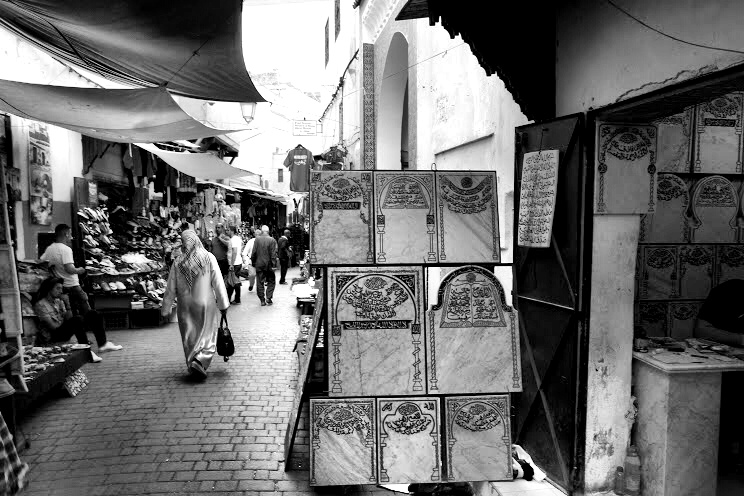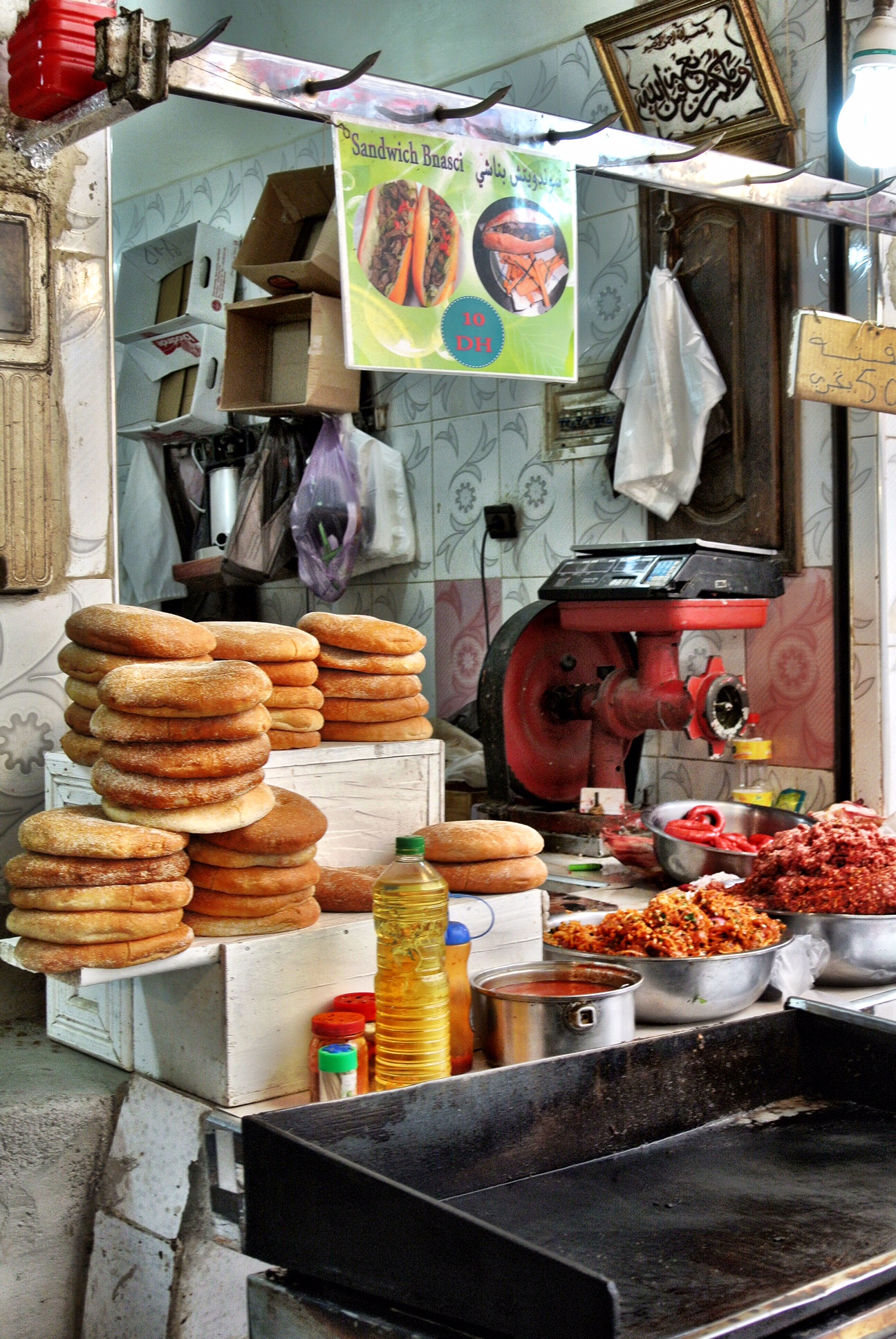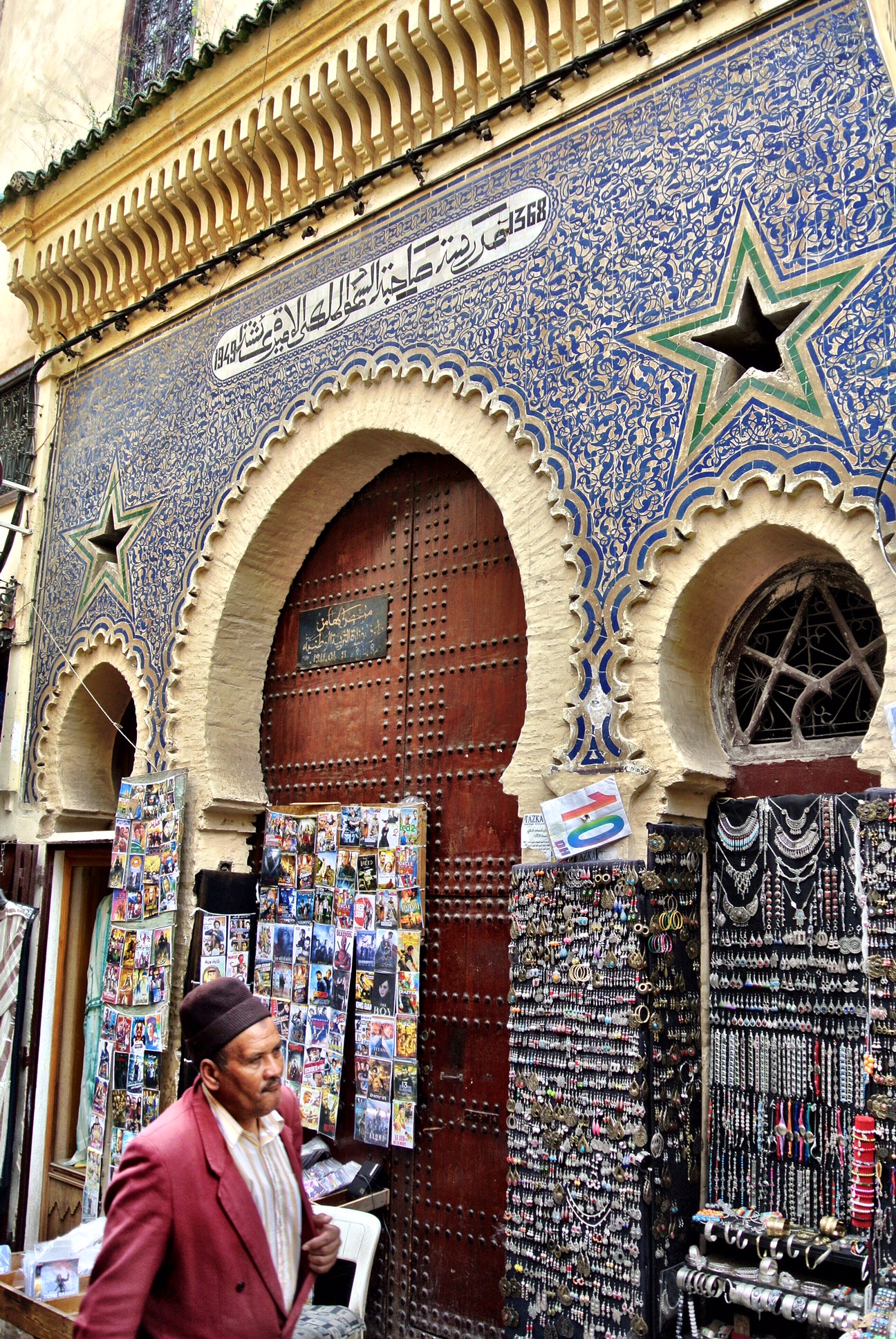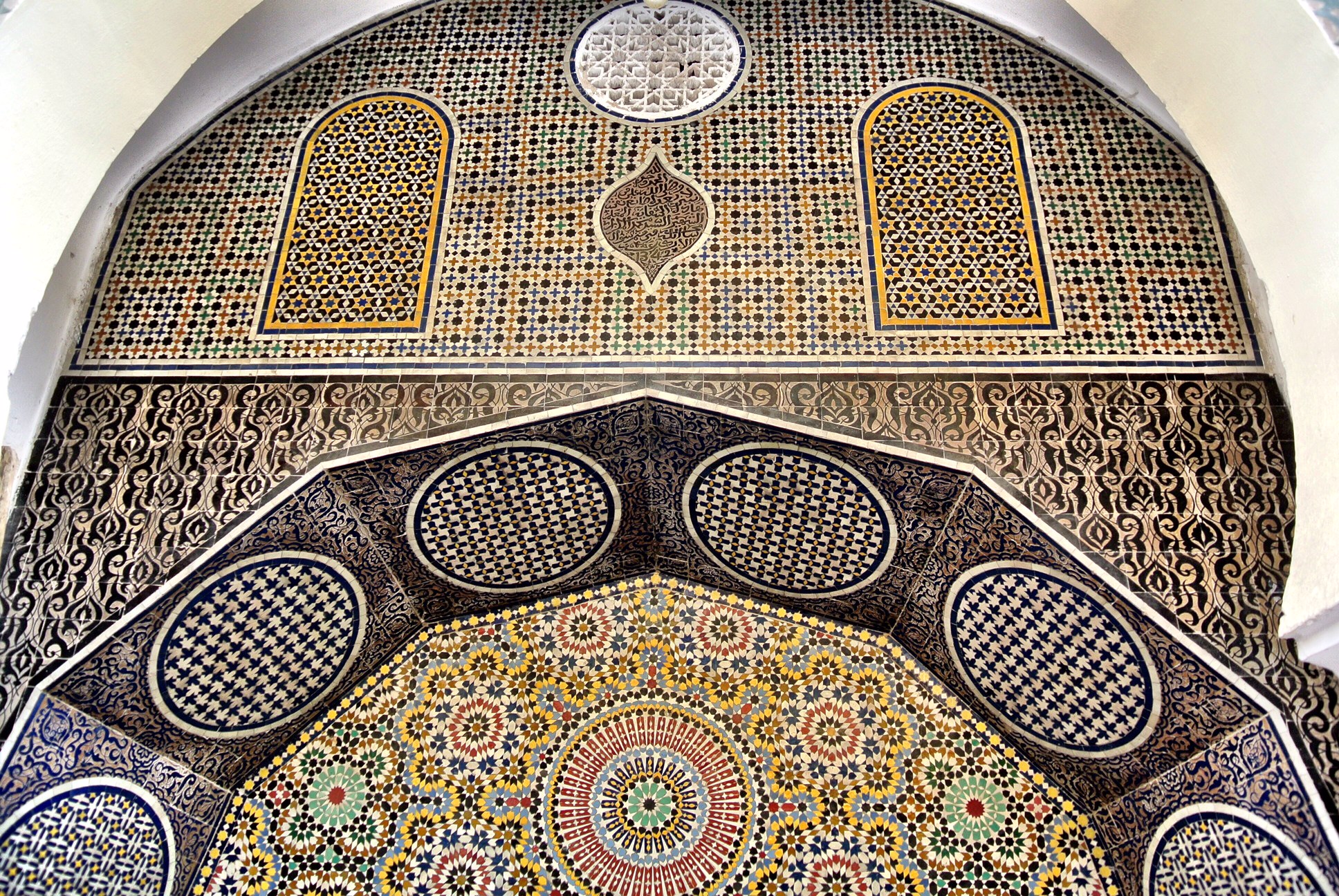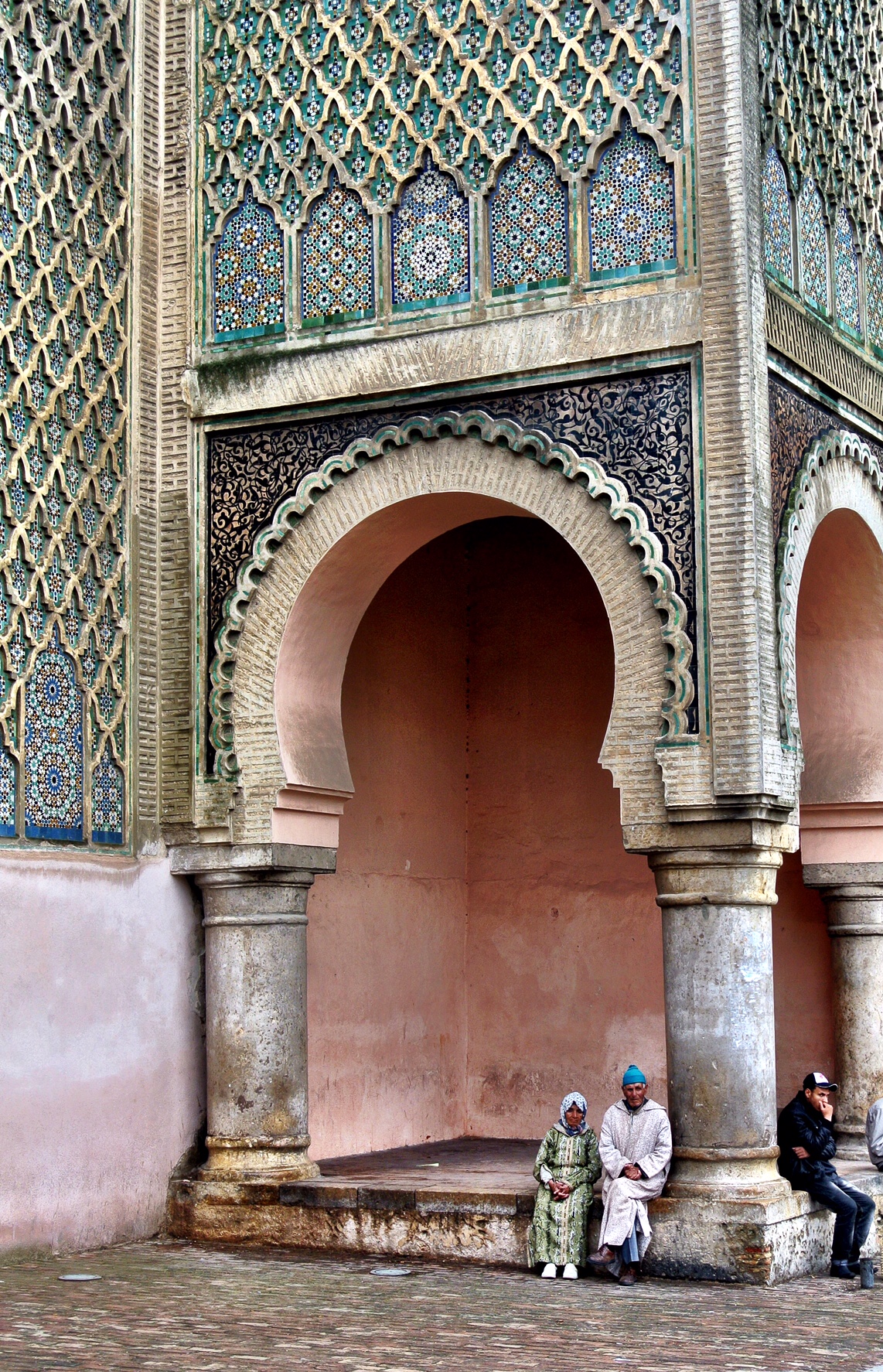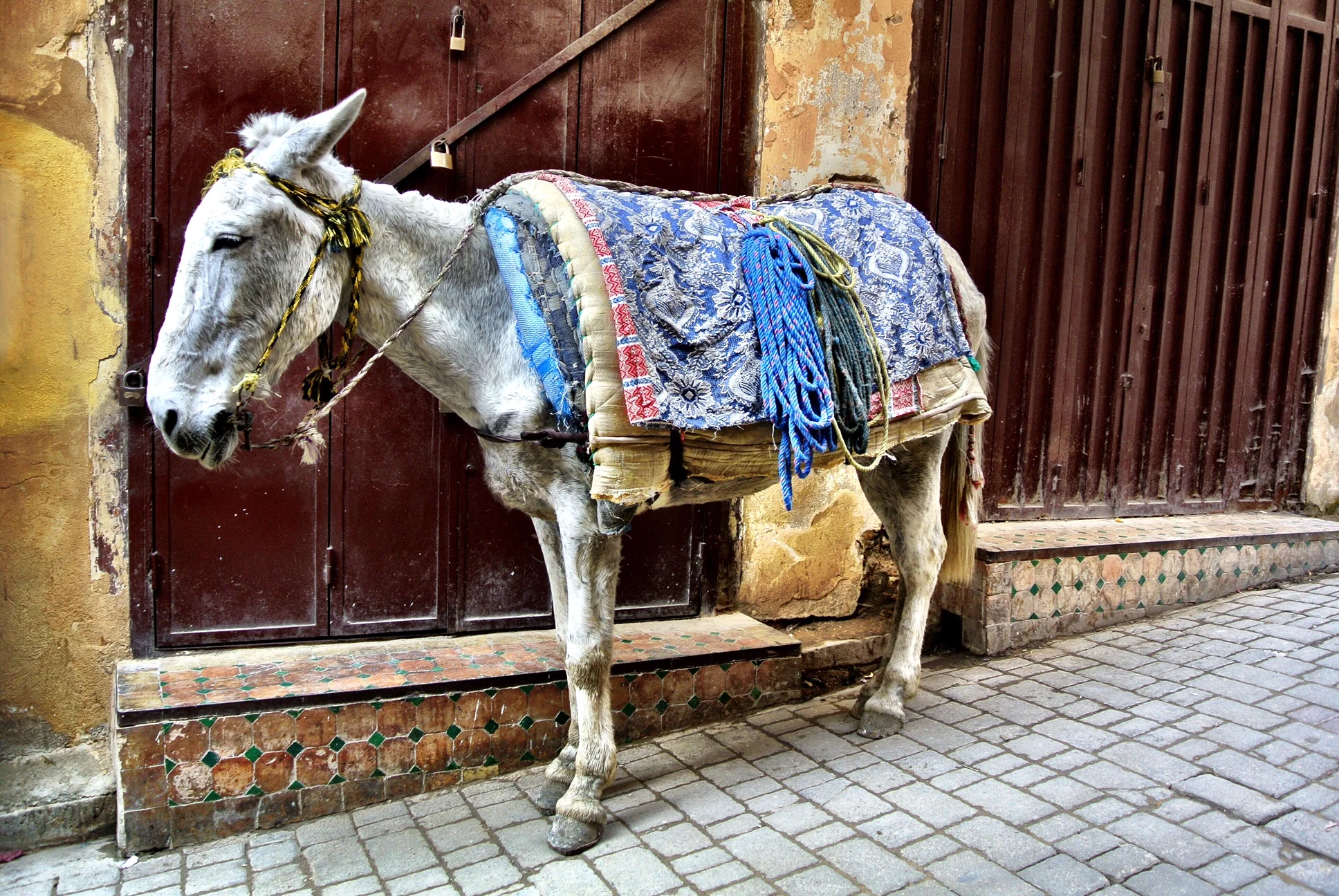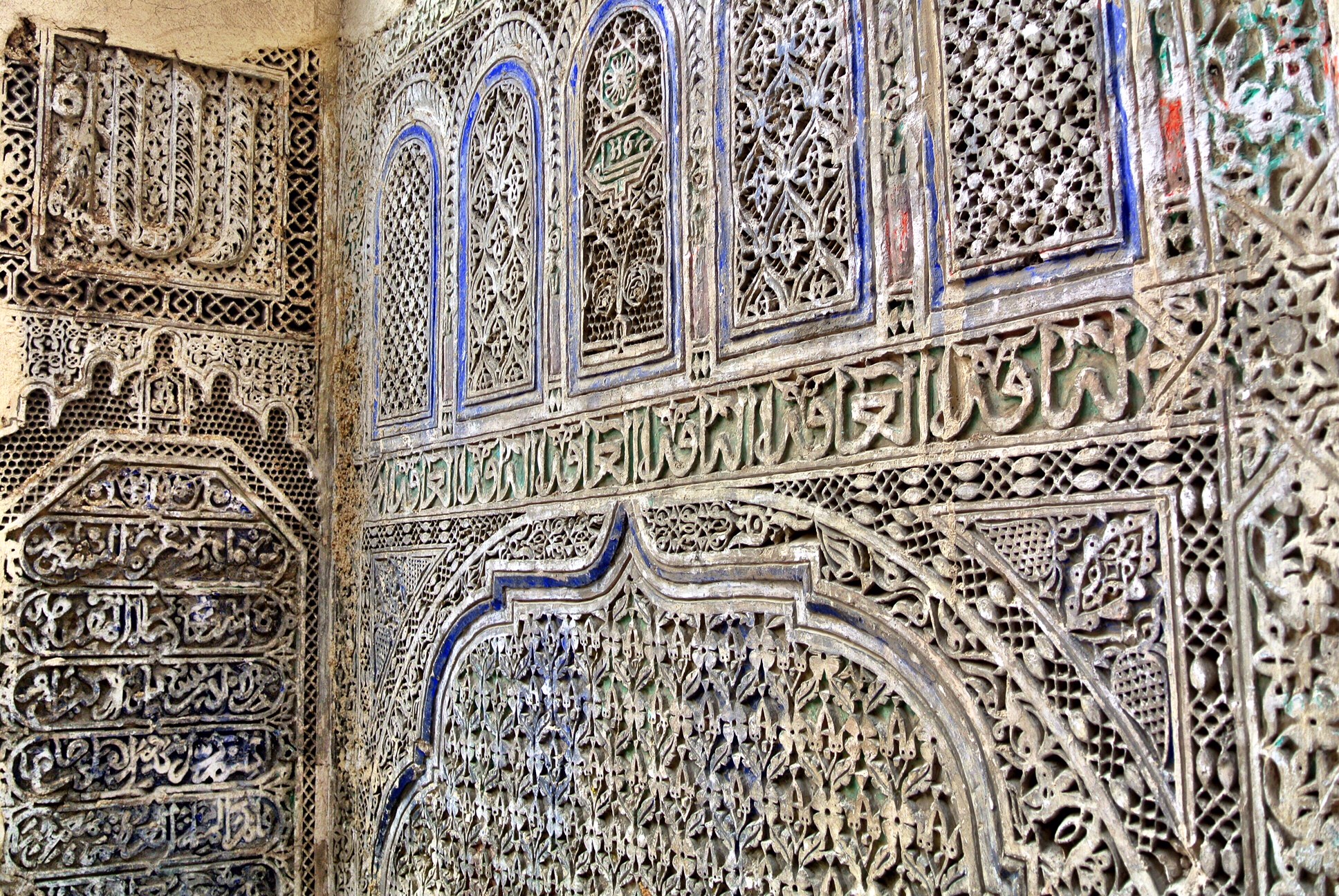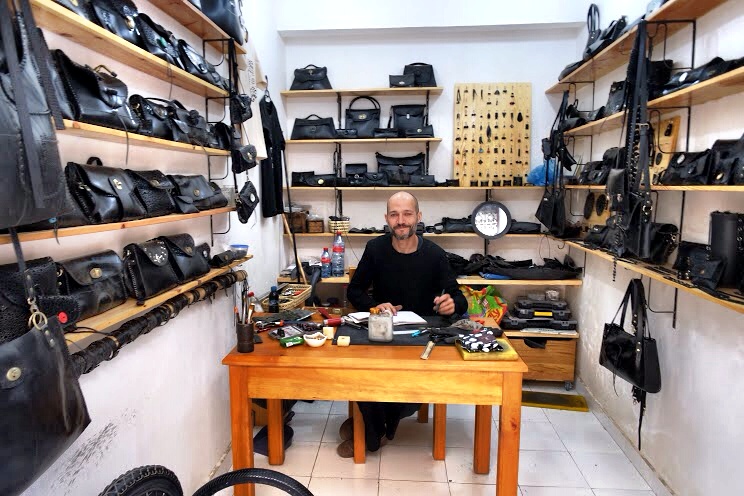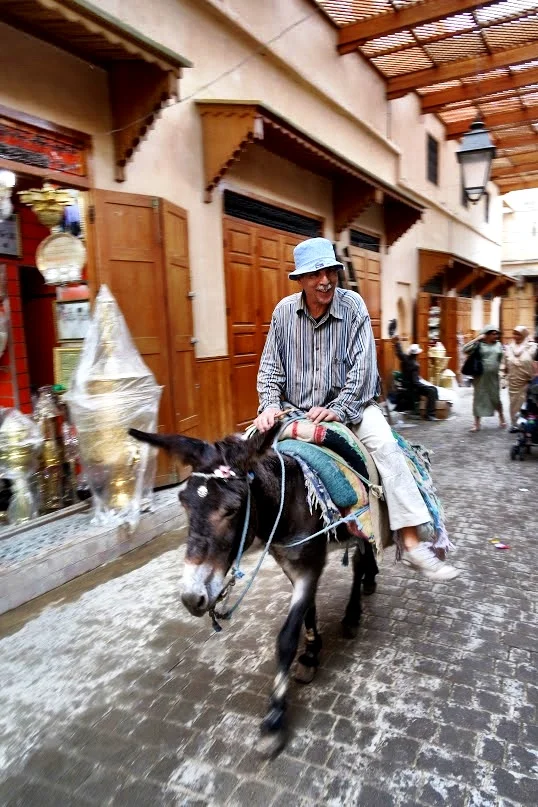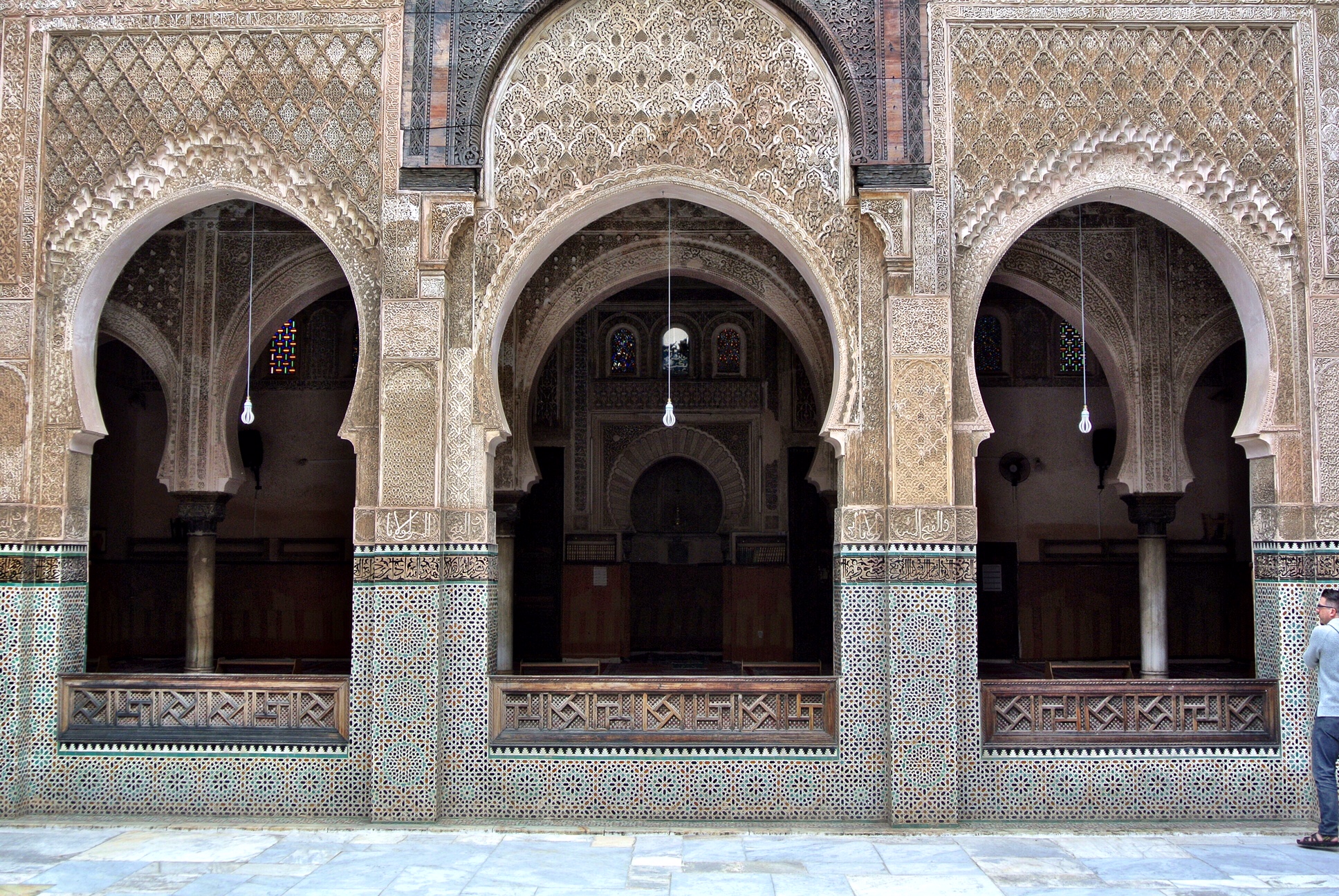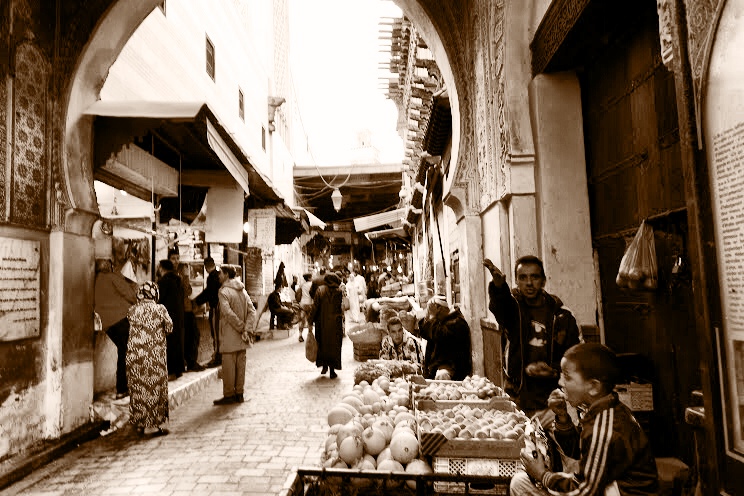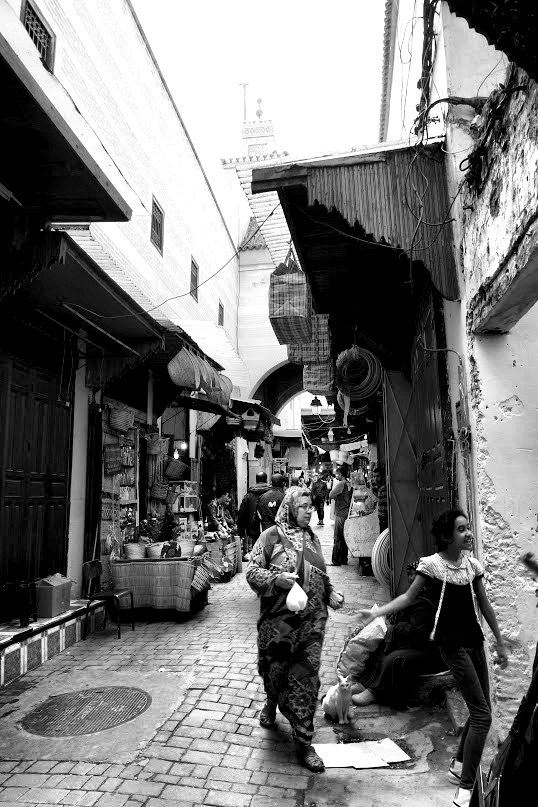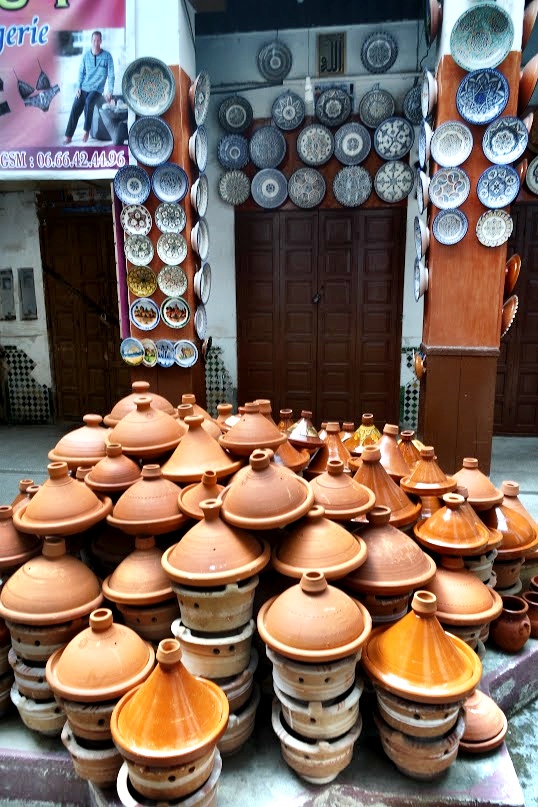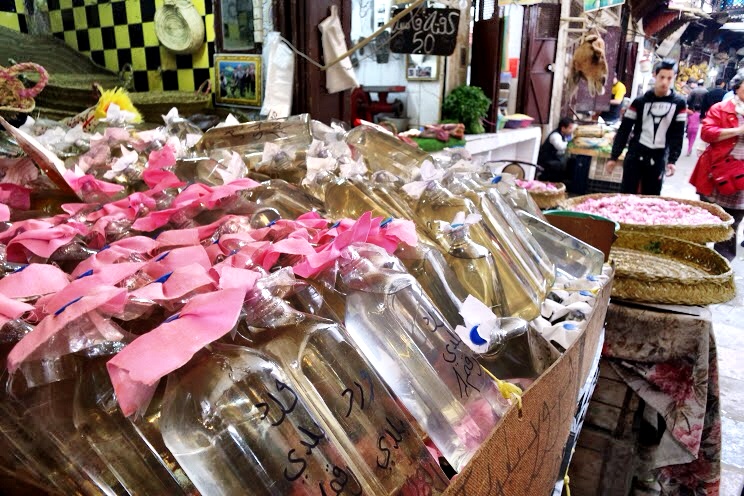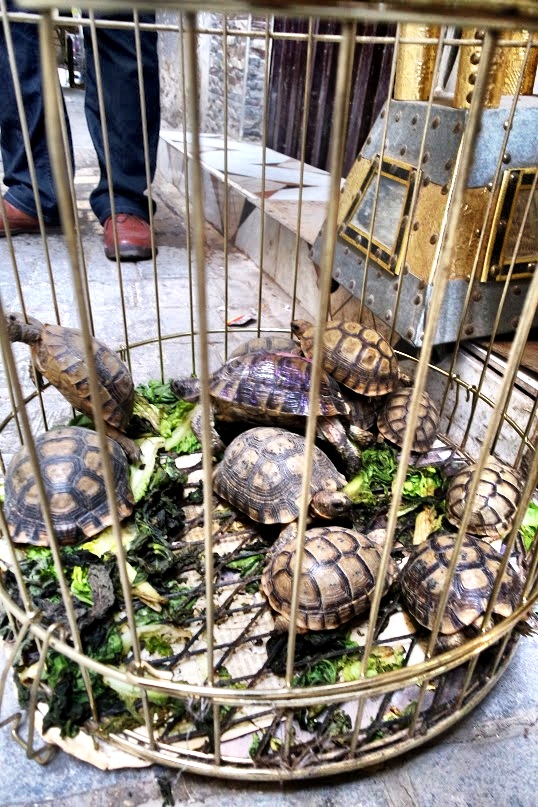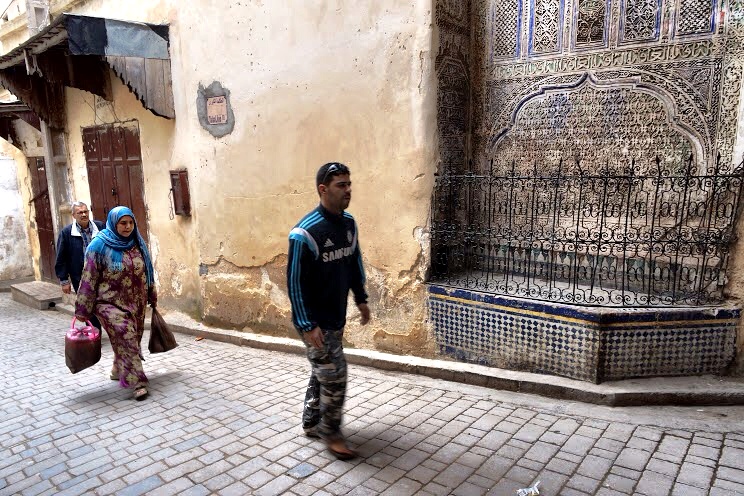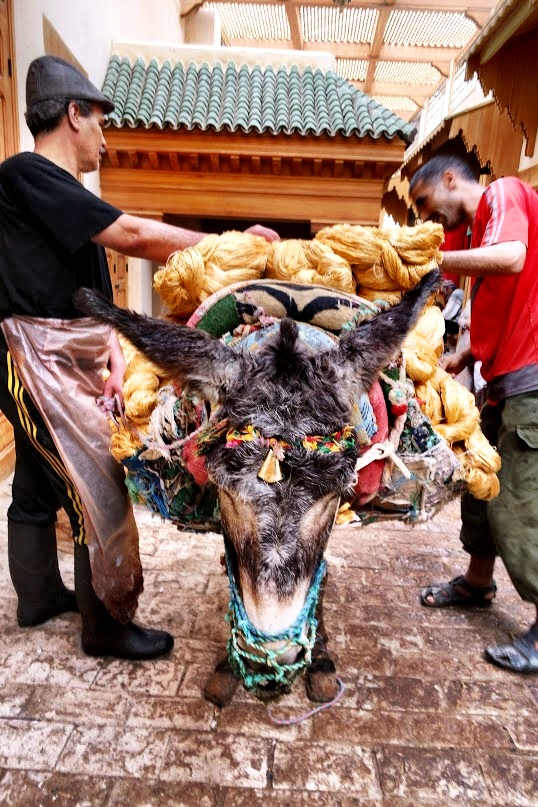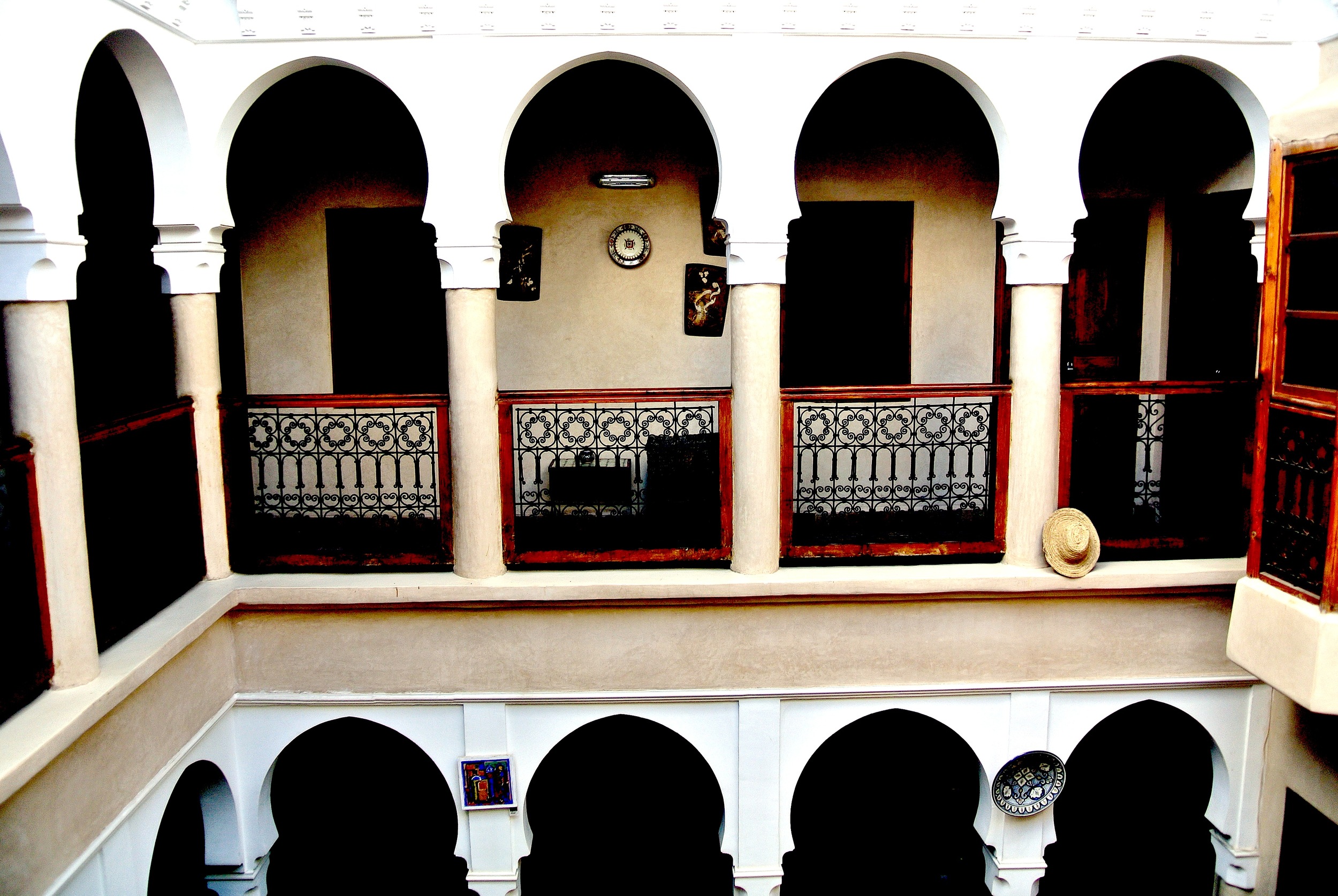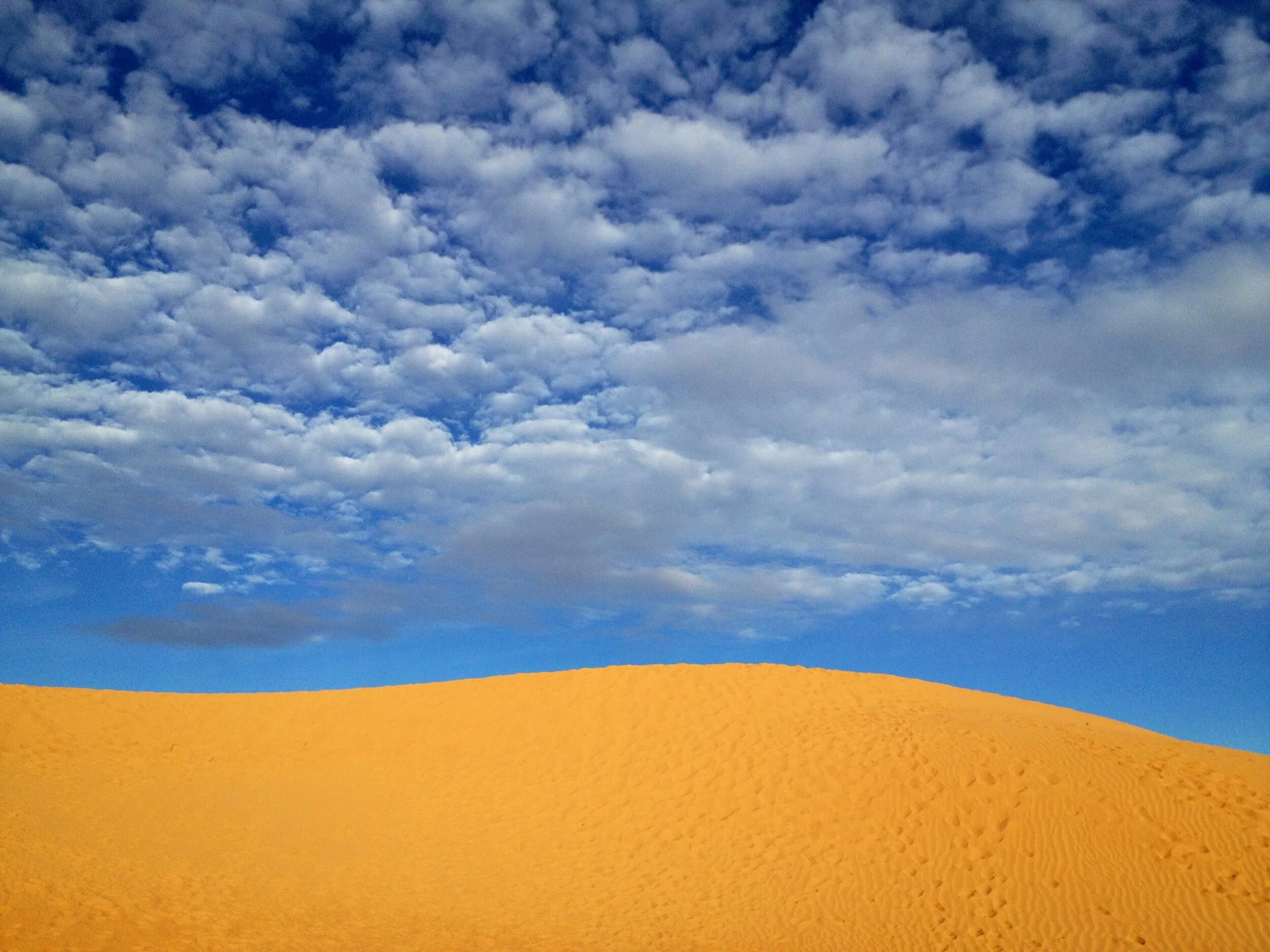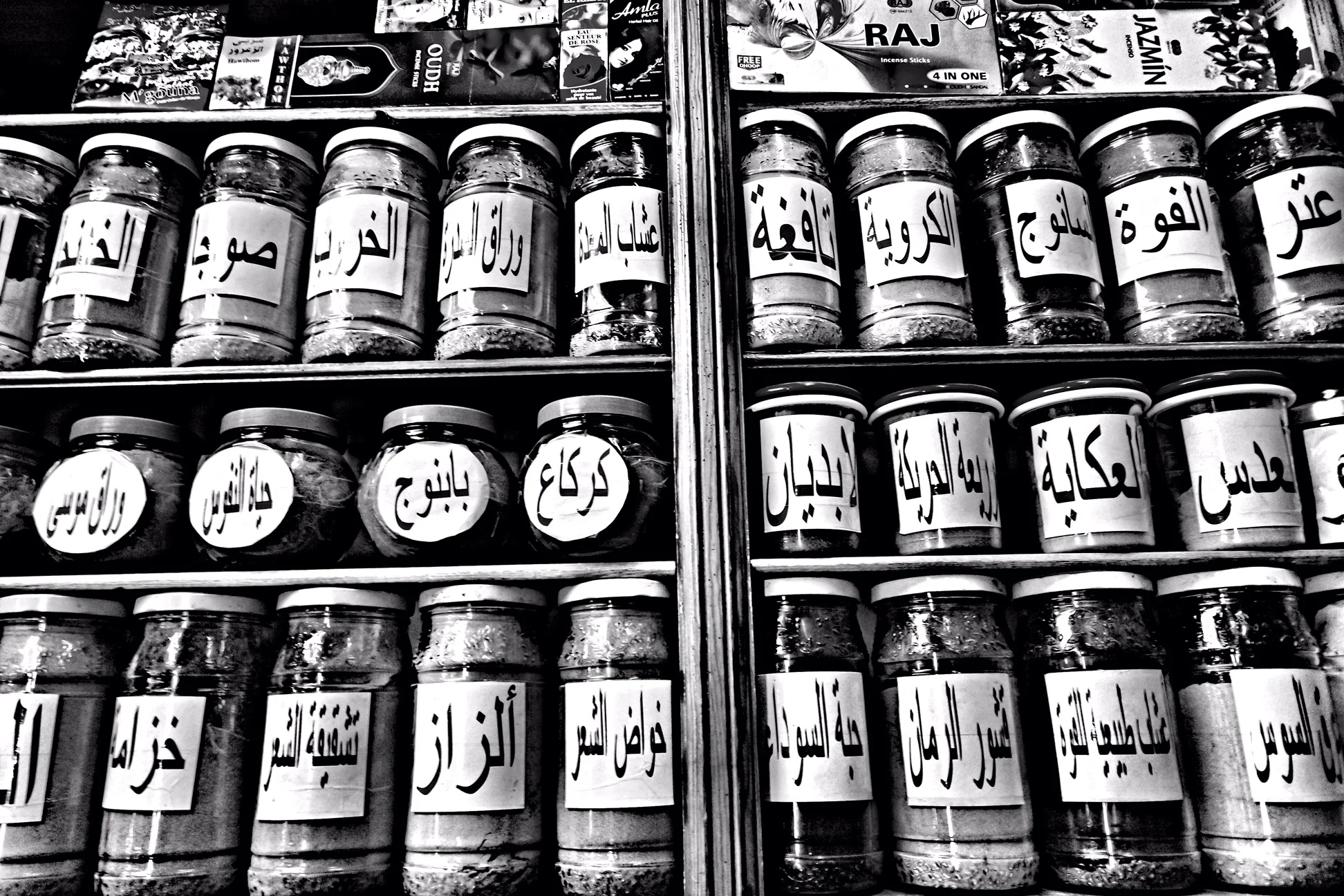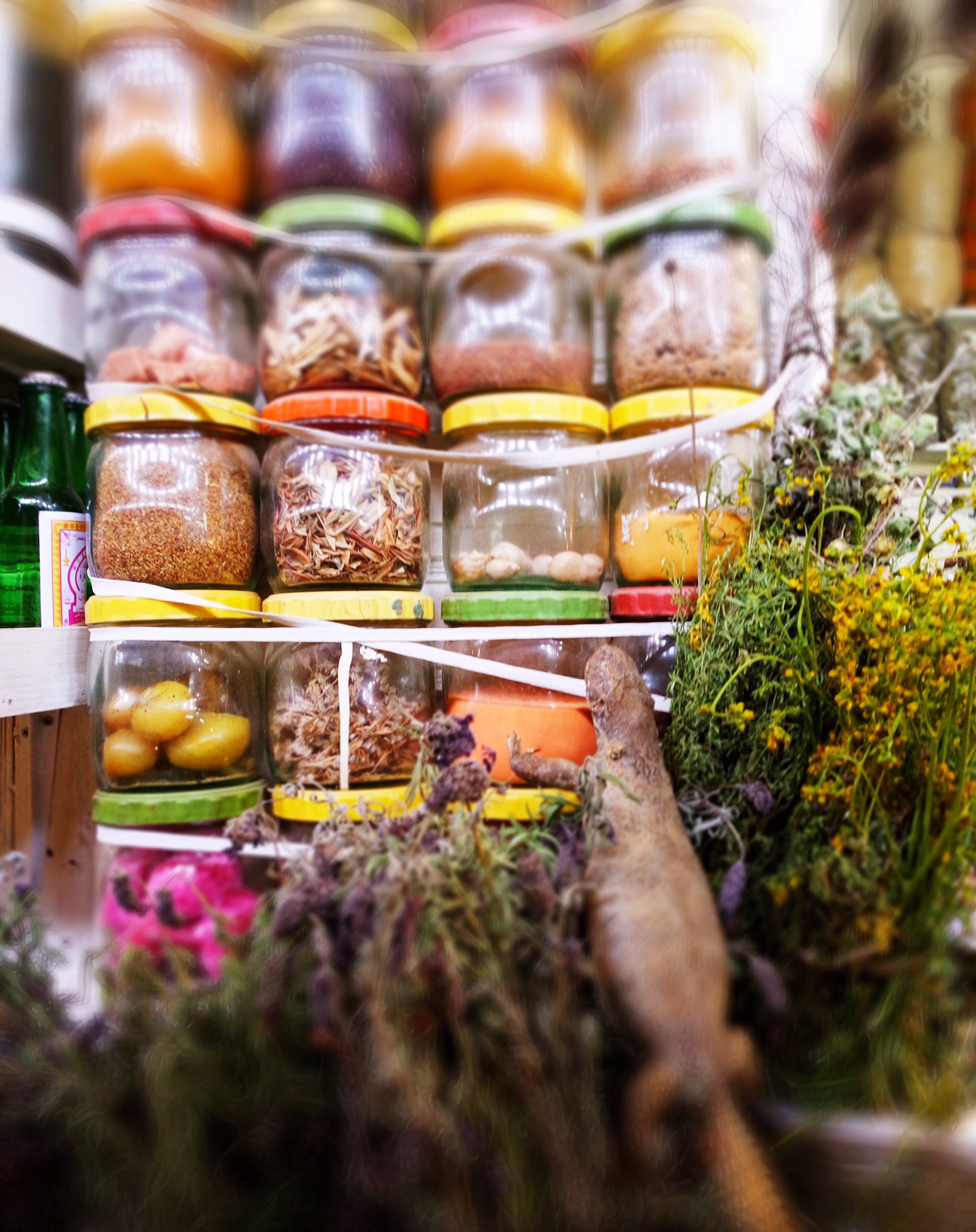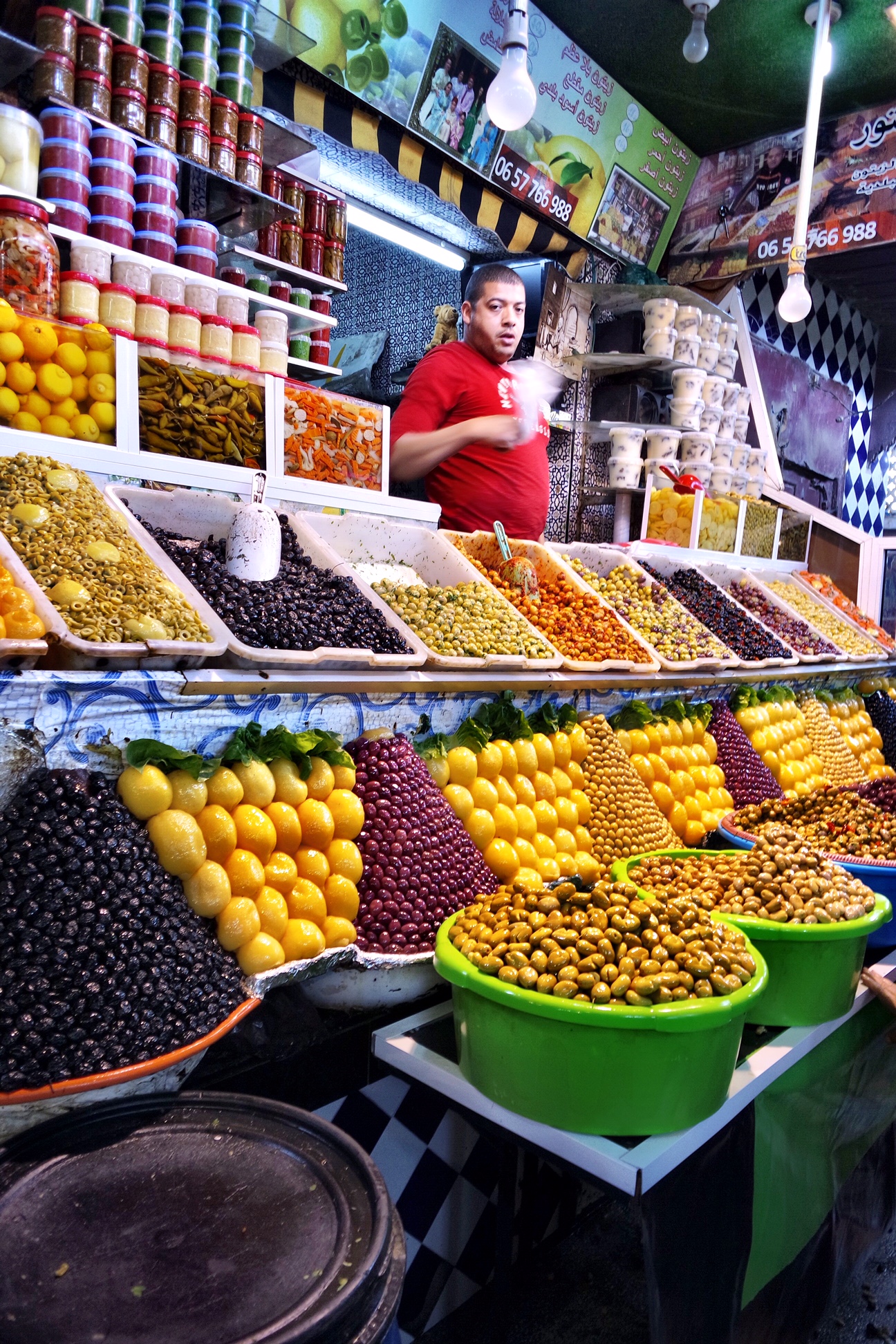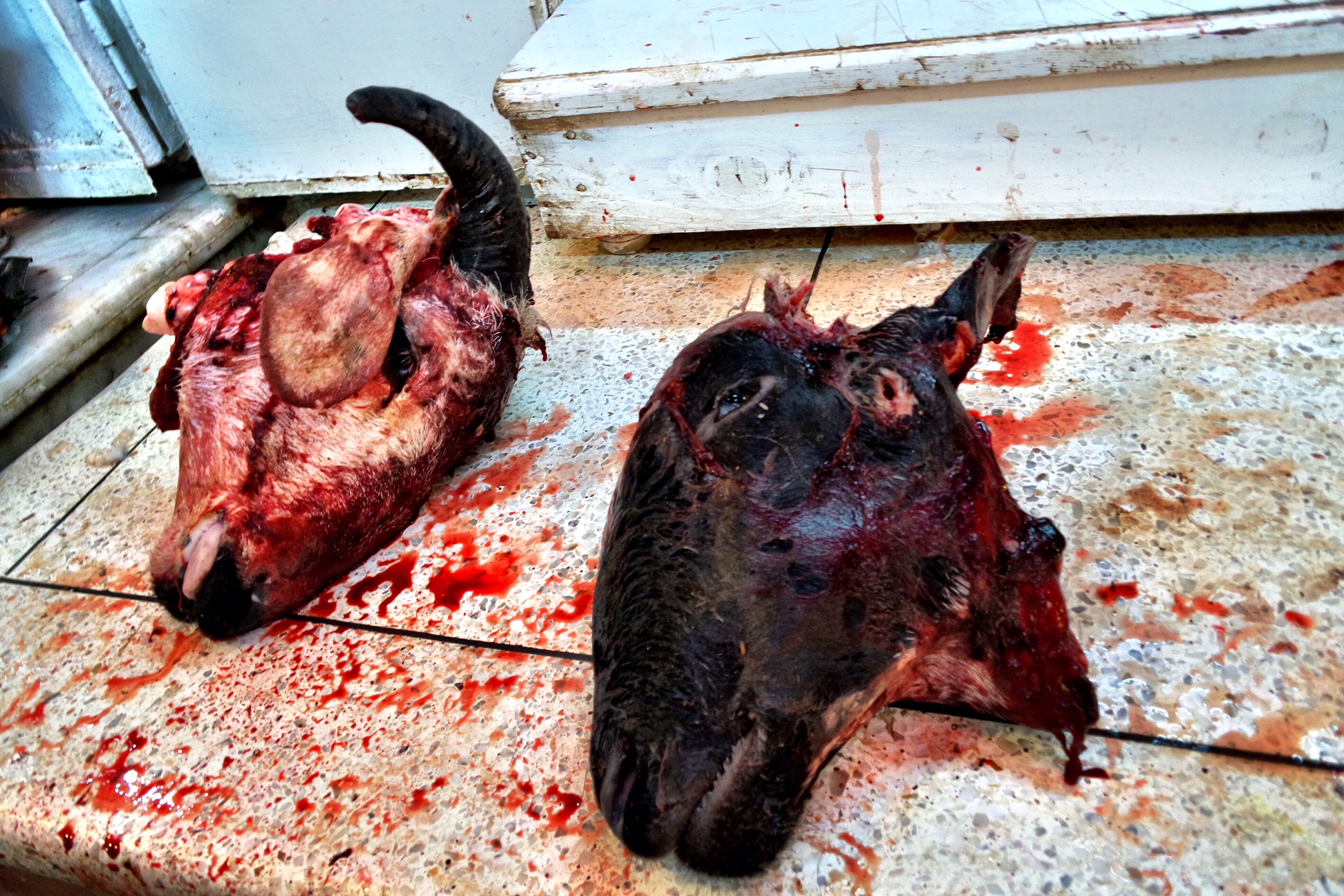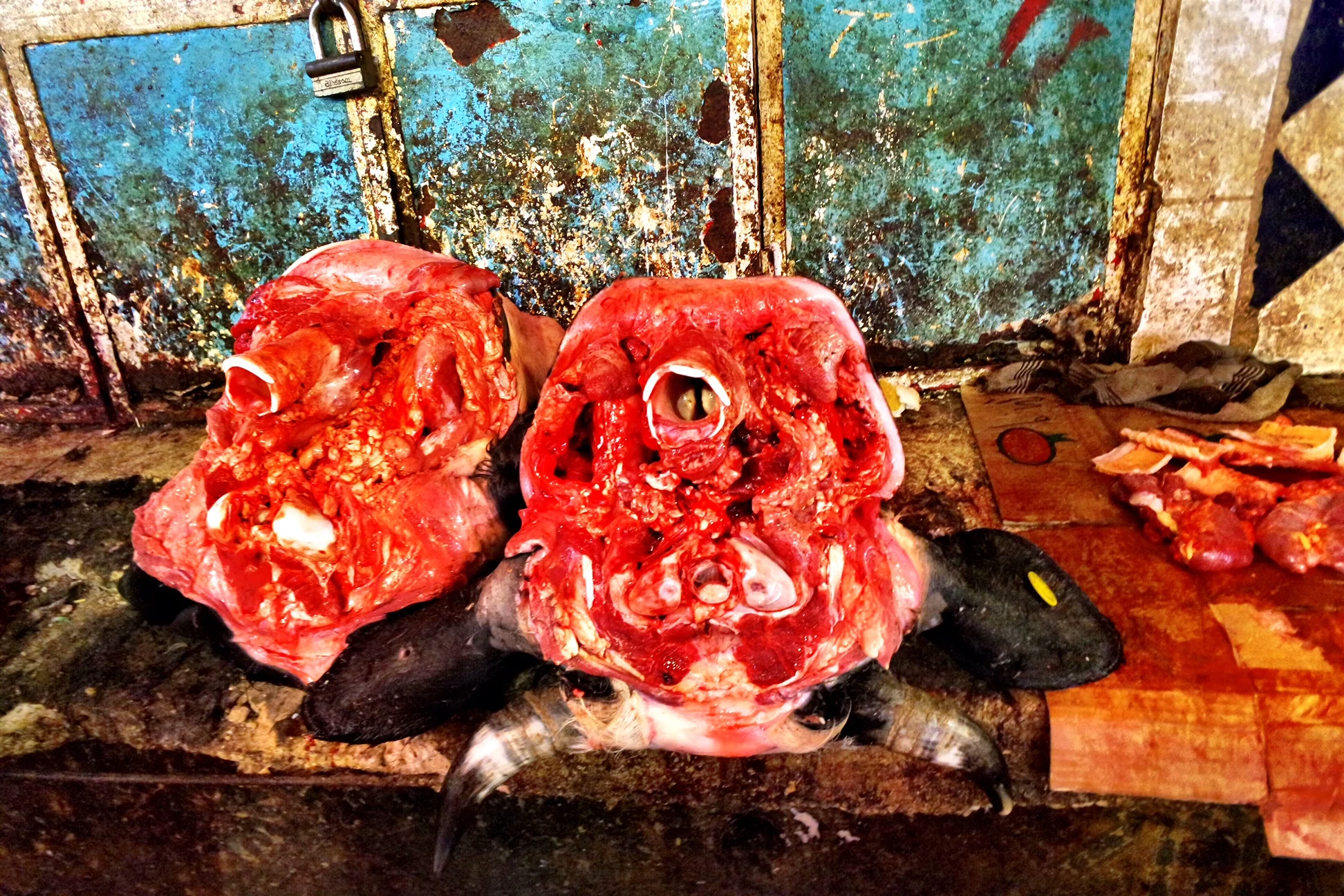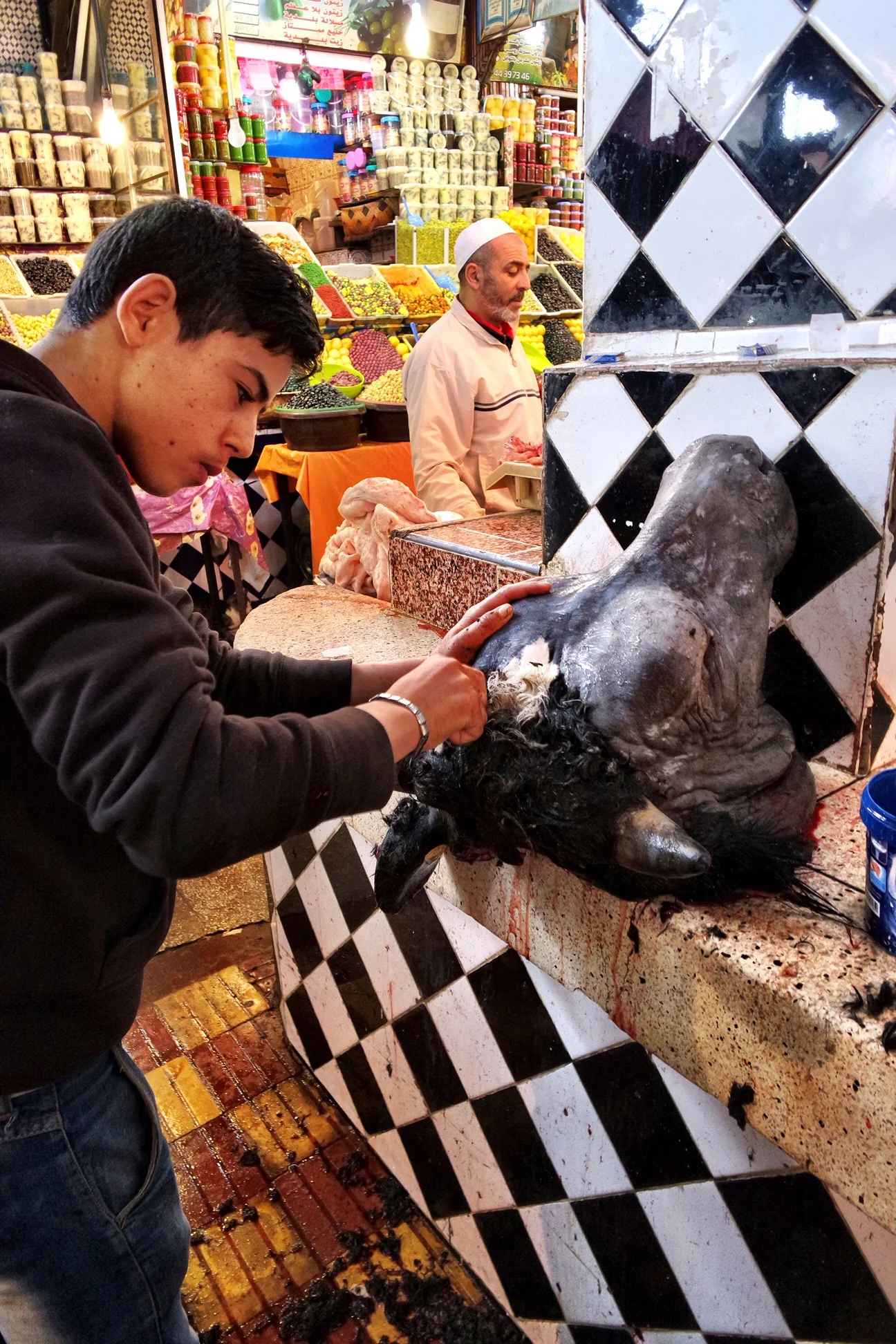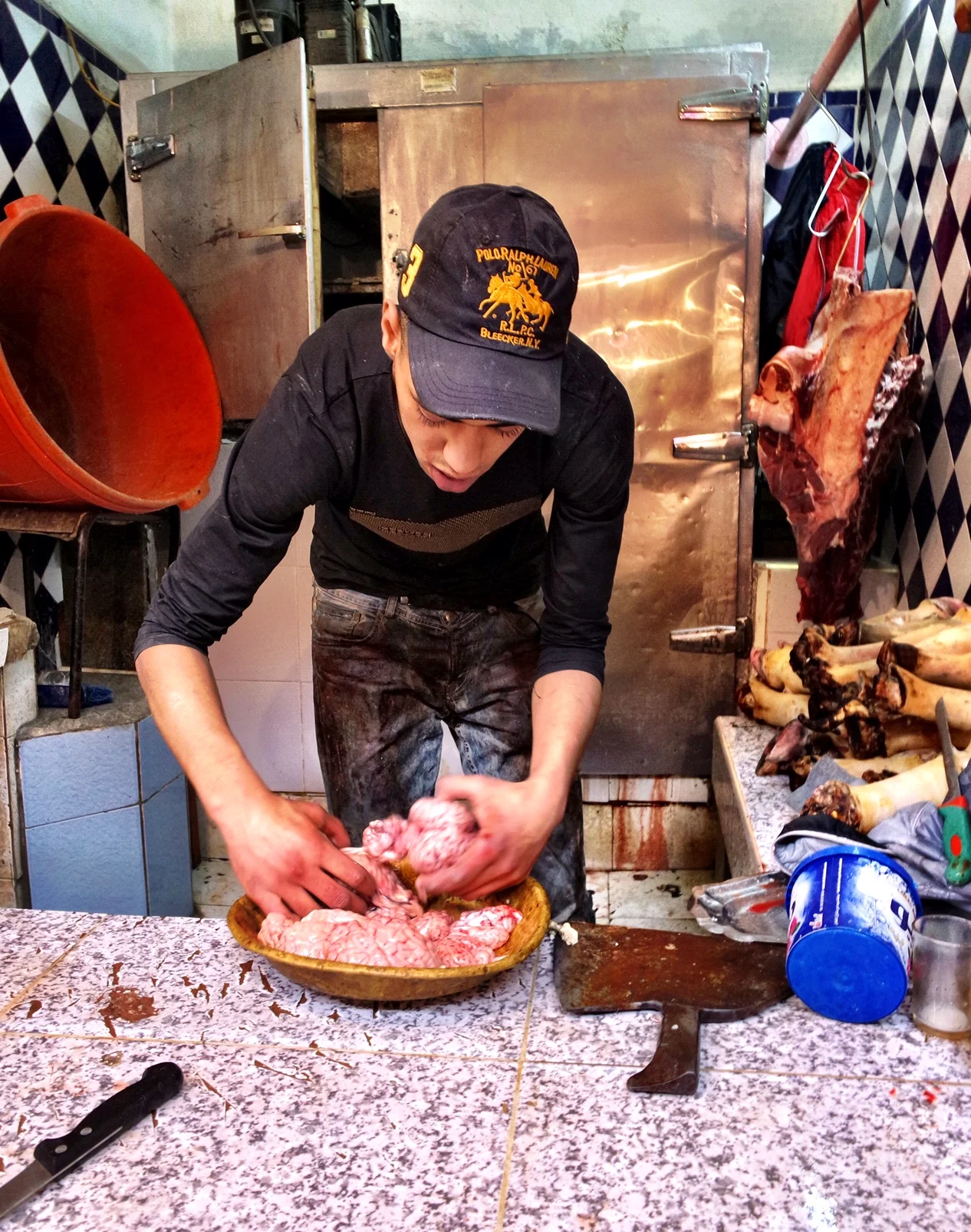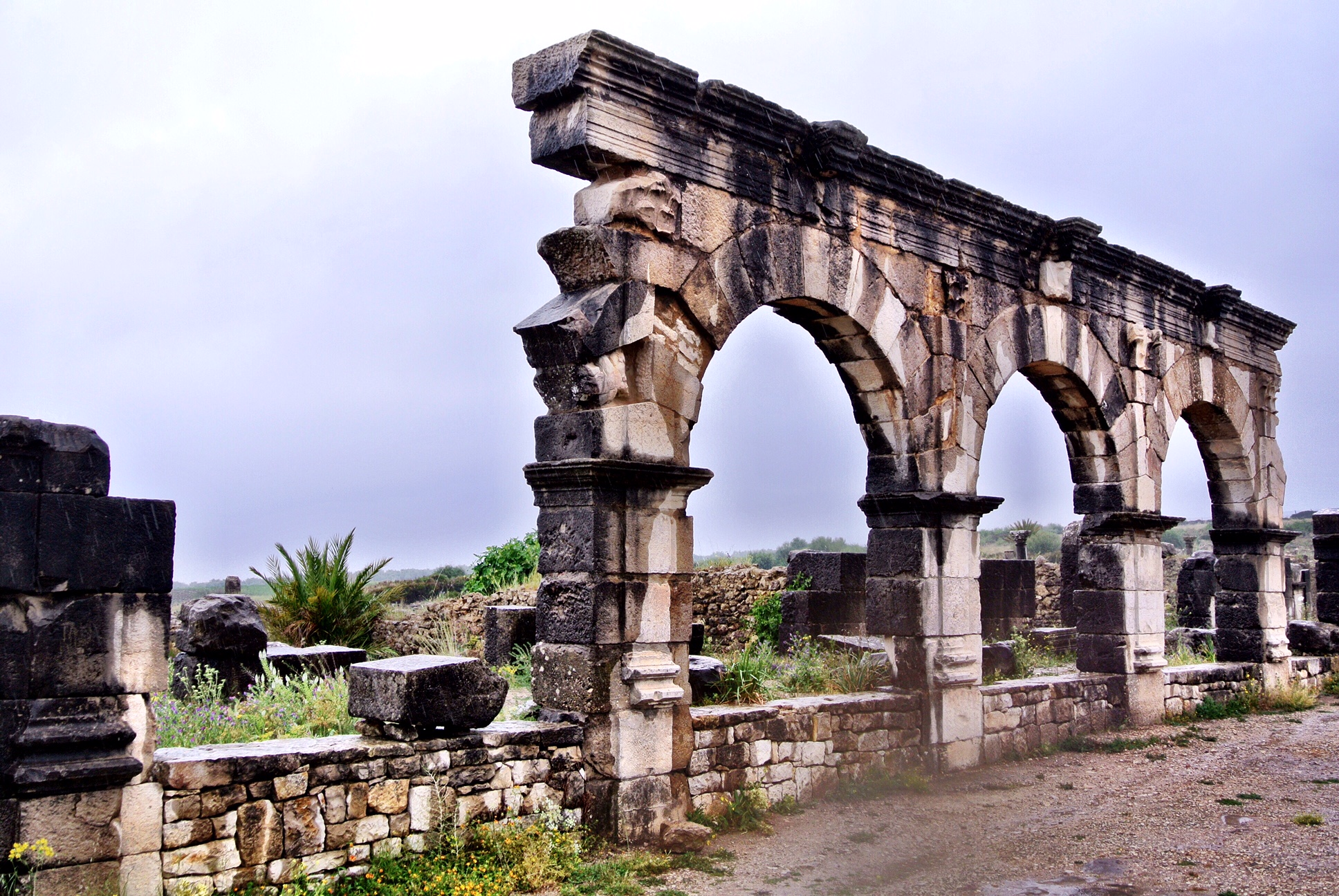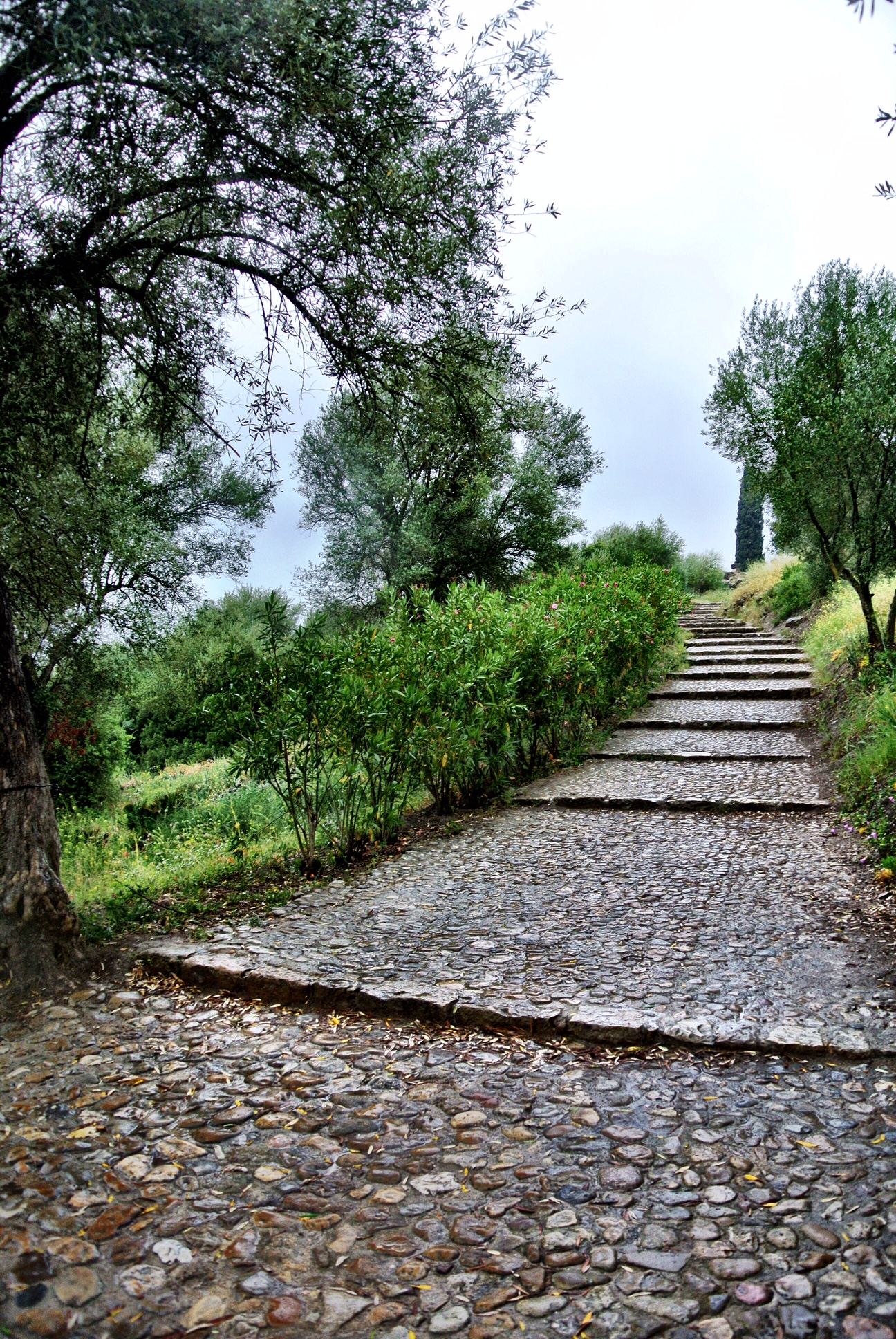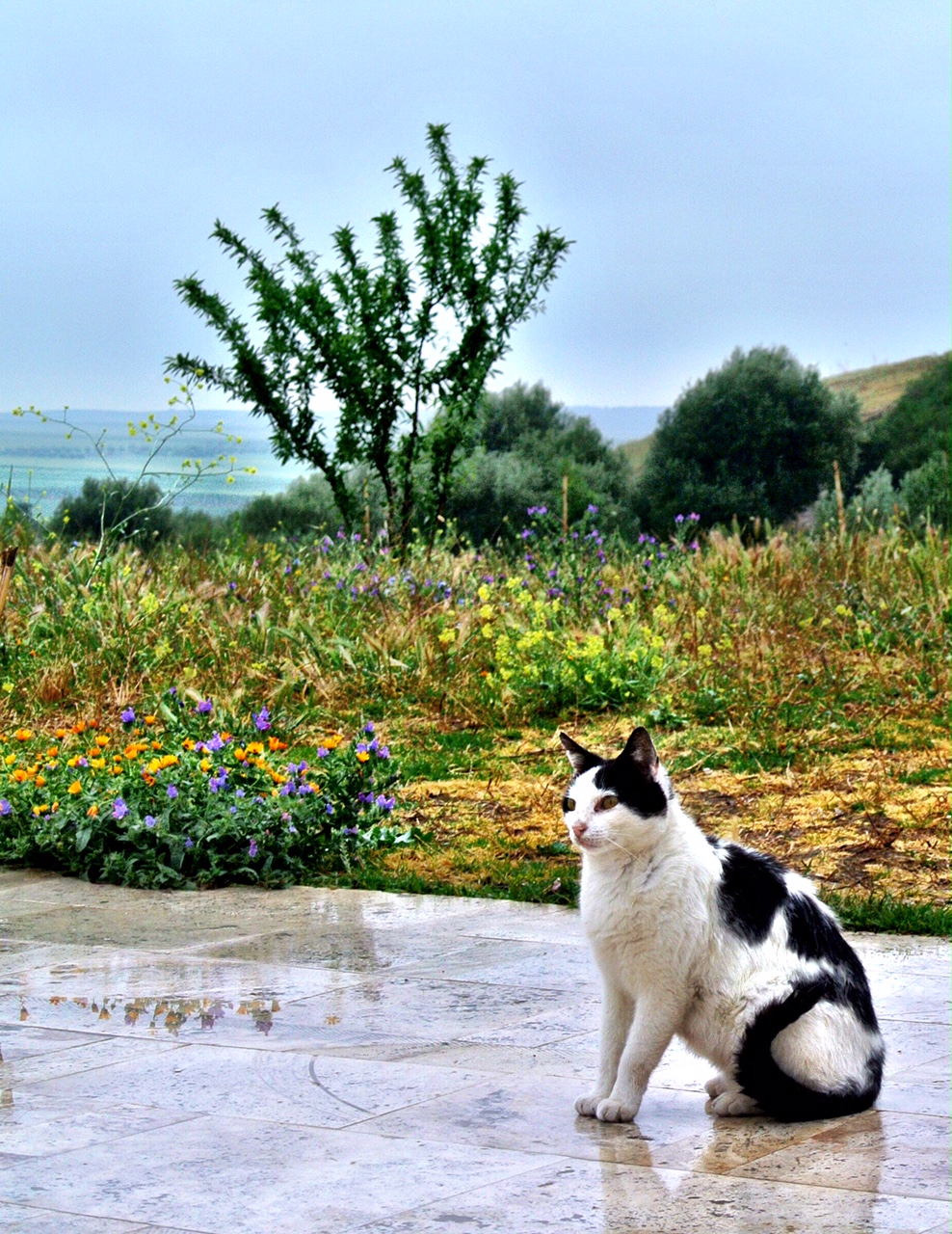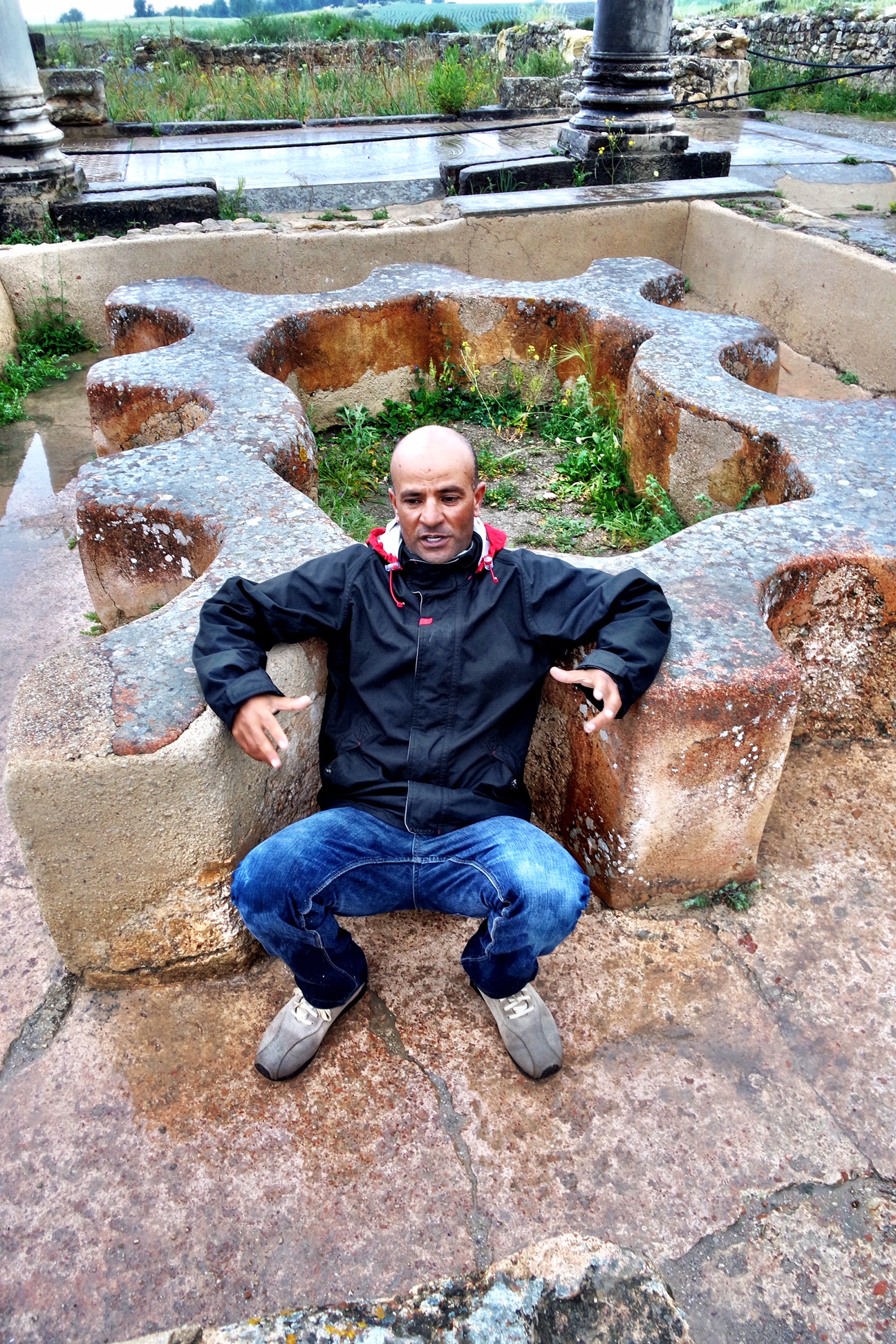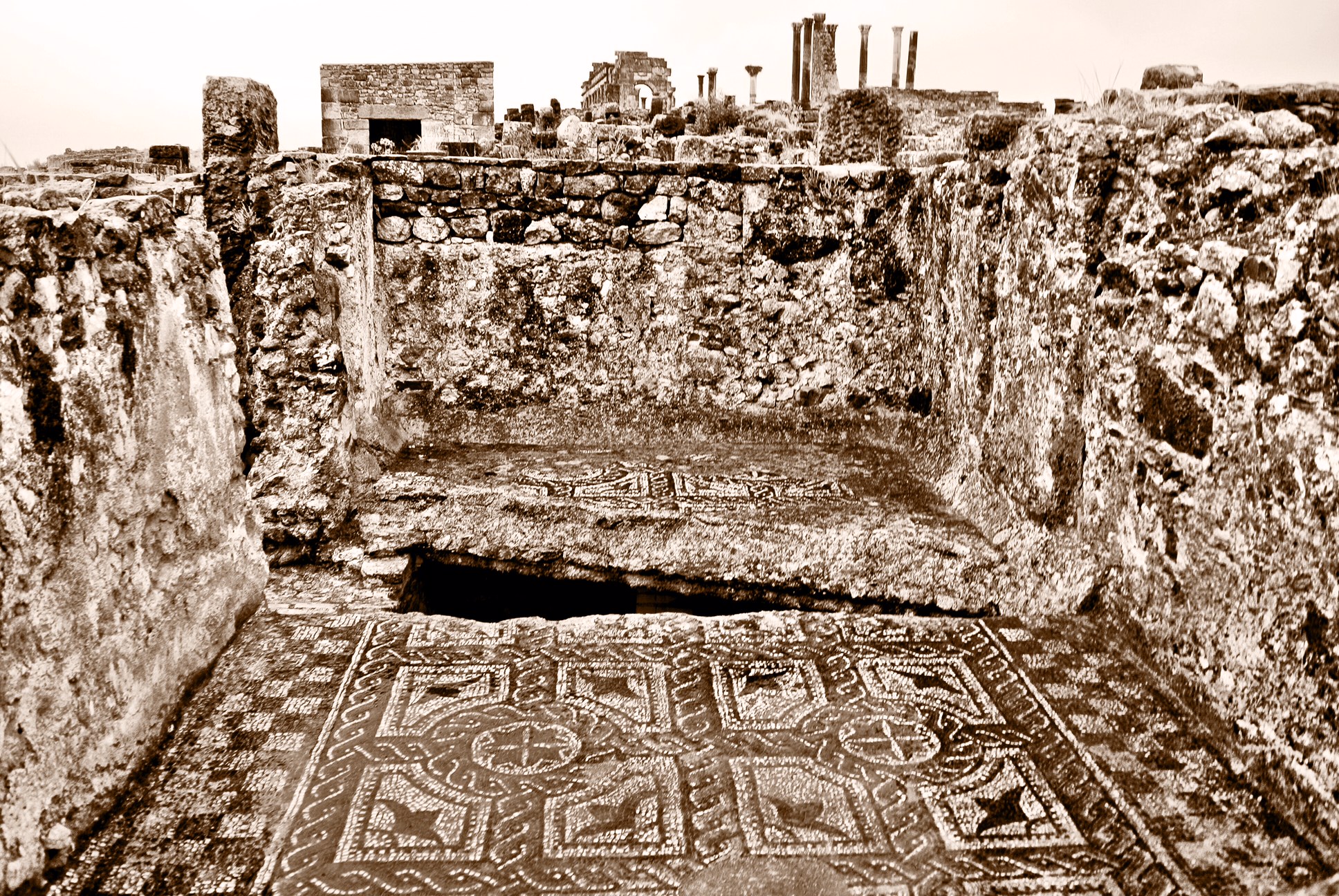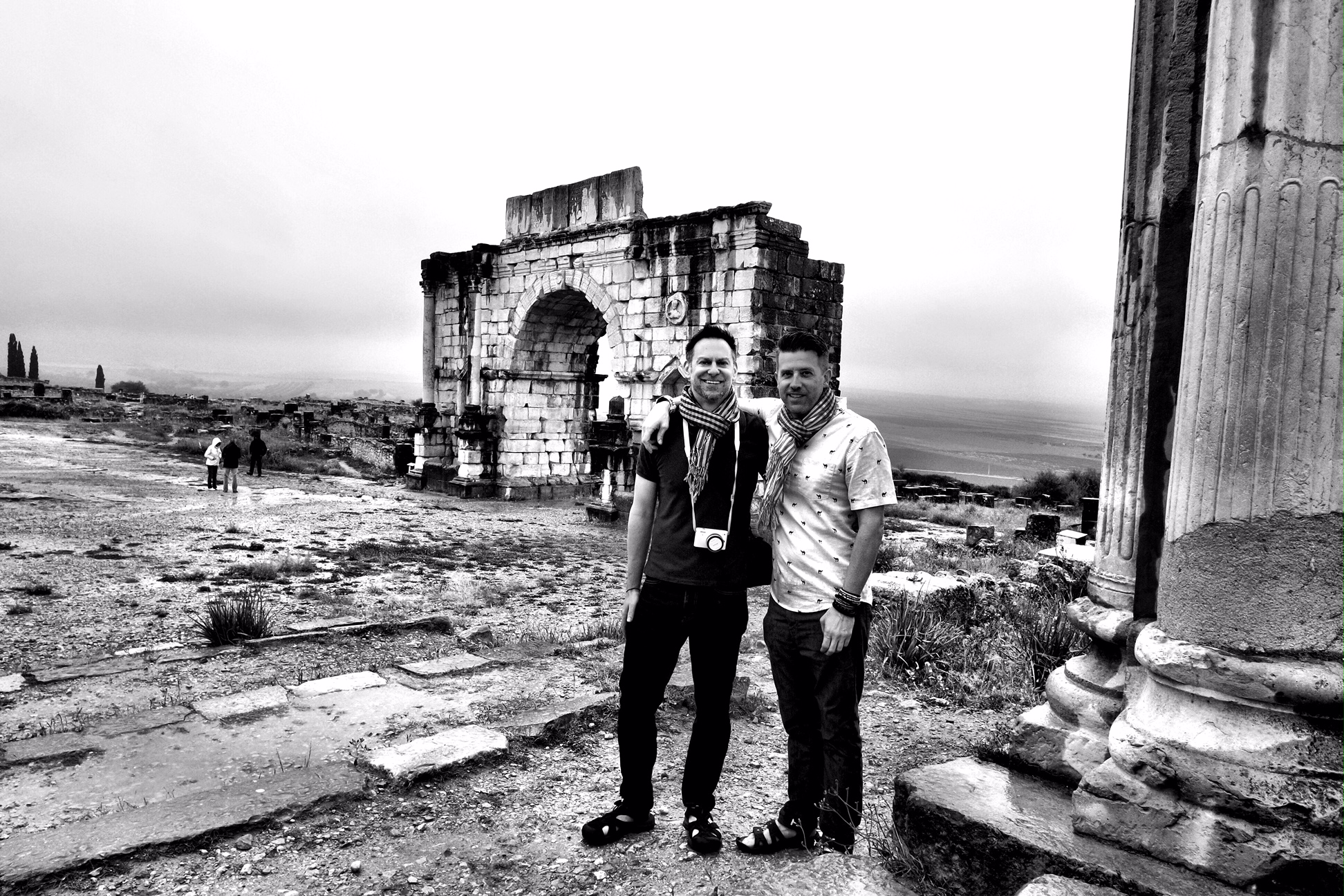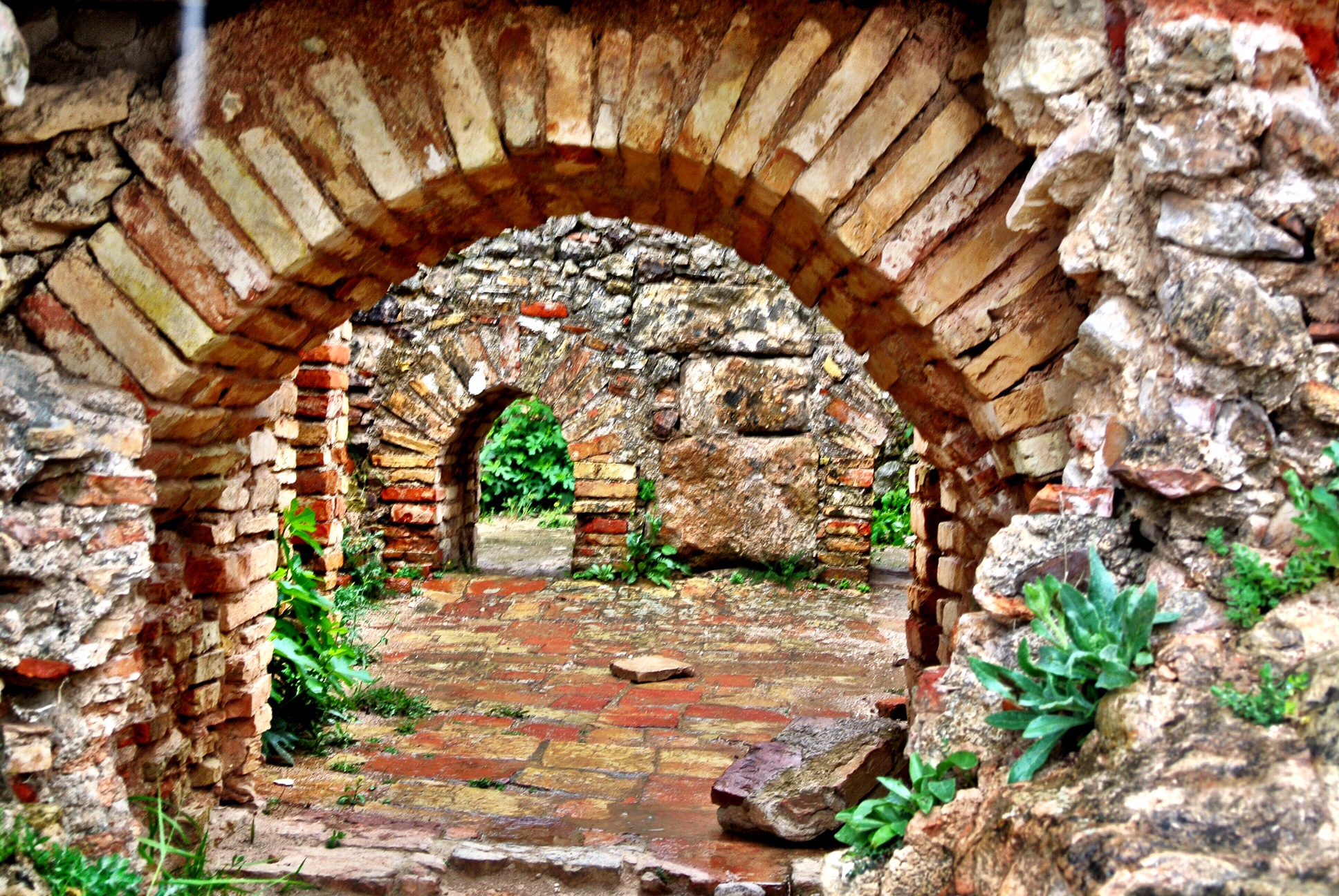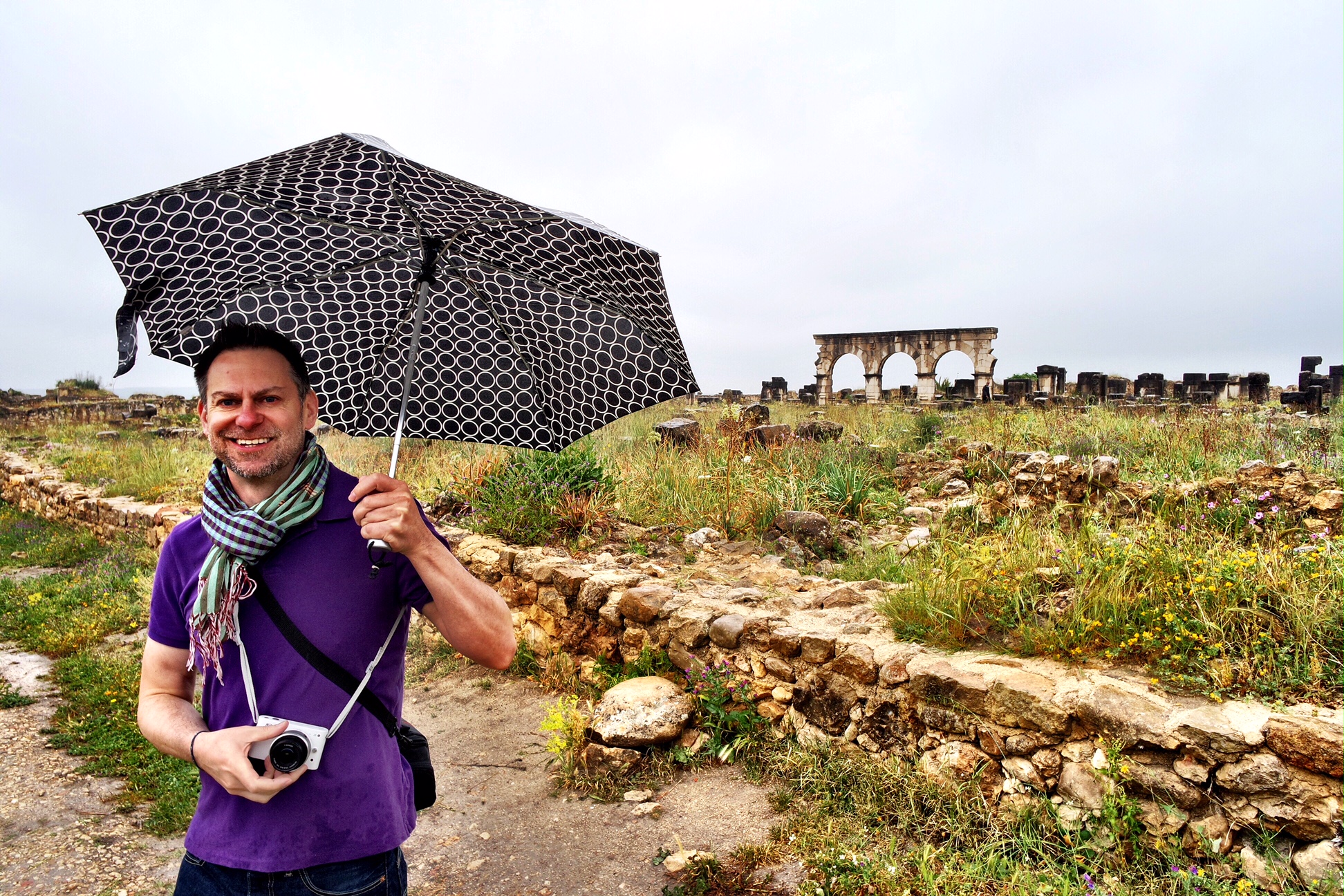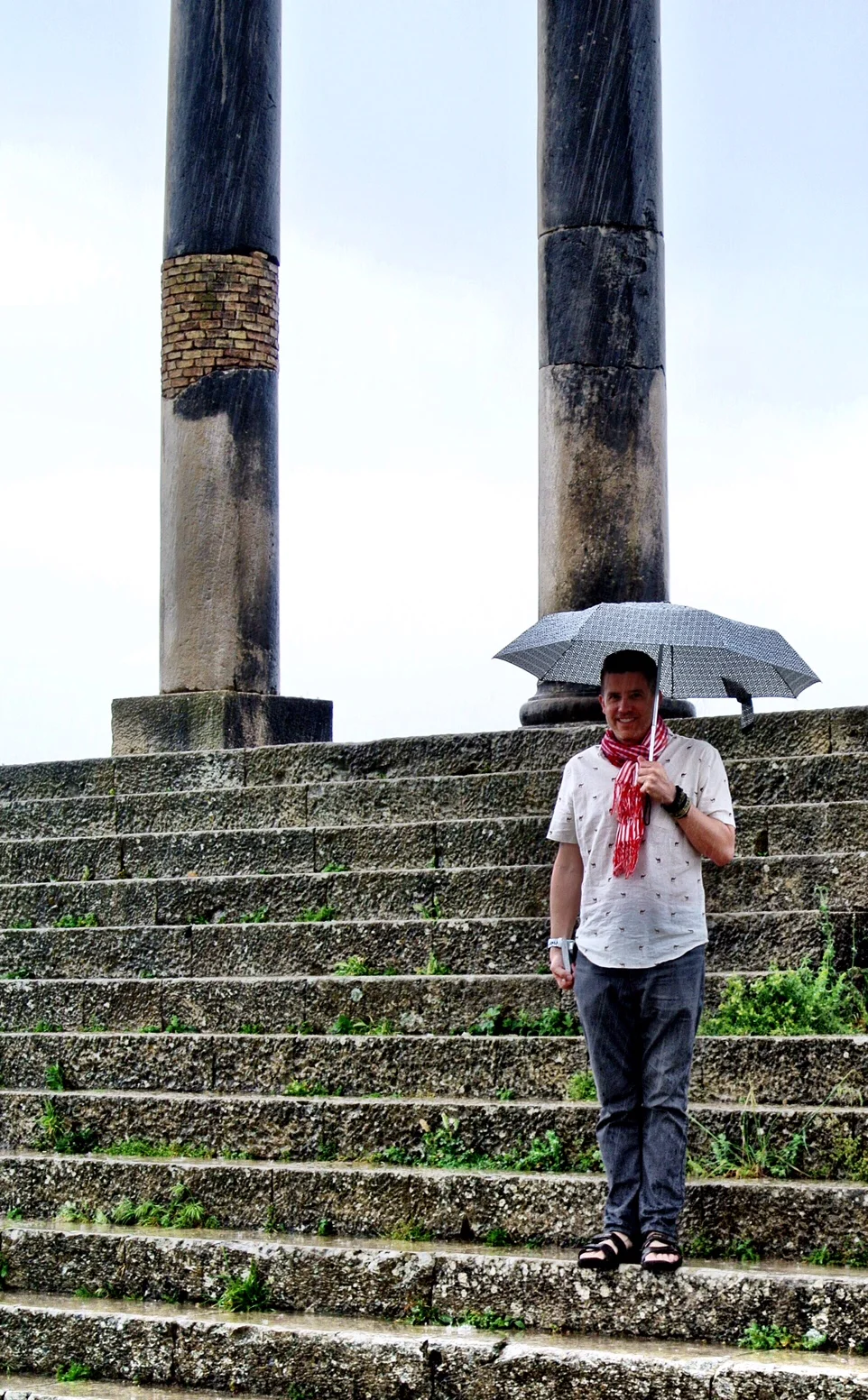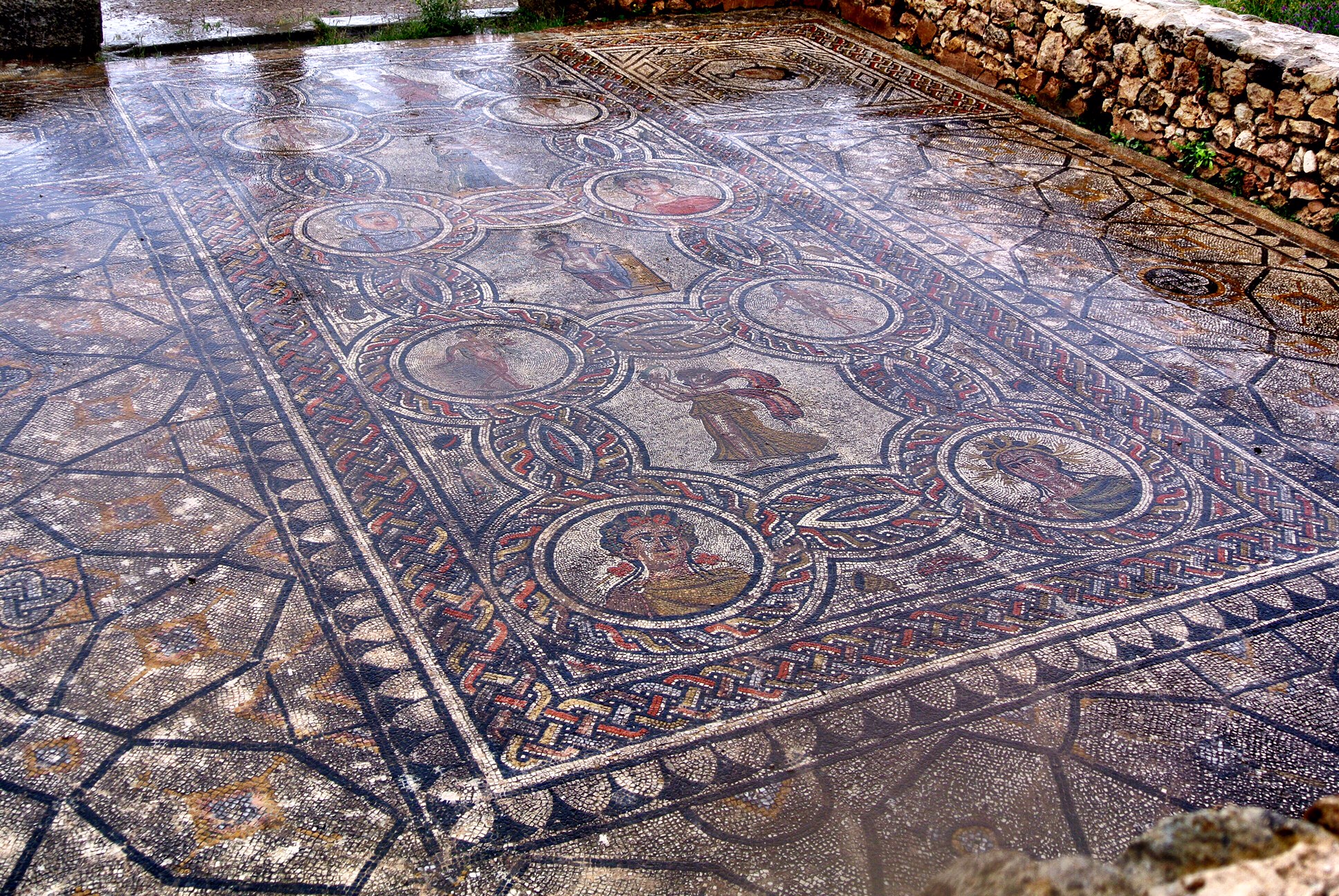OK, that’s a bit dramatic. But Fez, Morocco is an intense city to explore. Read these tips before you go.
A donkey overpacked with boxes is about as much of a traffic jam you’ll encounter in the Fès medina.
Fès is a city of discoveries. You never know what lies around the next corner. You cannot imagine the beauty that hides behind a plain wall once that wooden door opens.
As such, though, it can be intimidating as well. I’m not gonna lie: That first day we had booked to explore the medina on our own, we were hesitant to leave the riad. We really had to work up our courage. Because once you step foot outside the door, you have to be prepared to not only get lost, but also to deal with local men making snide comments, hoping to get you to pay them to act as guides.
“For the most part, it worked, and we were able to follow the trail back, like Hansel and Gretel.”
Landmarks like mosque towers don’t really help you find your way around the medina — there are lots of them, and once you turn a corner, they’re gone.
1. Get a guide on your first day.
It’s nice to put yourself in someone else’s hands on your first day in Fès. Our guide, Abdul, was fantastic, and we just followed him around as he led us to the major sites. It’s nice to get them out of the way, know you’ve ticked the “important” stuff off your list, and that you have nothing left but to shop and eat (and hit a hammam for a spa day).
Abdul took us to the narrowest street in the medina:
2. Pay close attention to how to get to the Blue Gate.
It all comes back to the Blue Gate, it seems. We took a daytrip to the Roman ruins and mosaics of Volubilis, and had a guide from the riad lead us to the Blue Gate just outside of the medina to meet our driver (there aren’t any cars allowed in the medina — and anyway they wouldn’t fit on the narrow twists and turns).
I literally just kept track of the major turns we made: left, left, right, right, right. And that was all we needed to retrace our steps the following day. Sure, we took a turn too soon a couple of times, but just backtracked once we hit a dead end. We got back to the Blue Gate eventually. And from there you can hit one of the major thoroughfares of the medina.
You never know what lies around the next corner in Fès. It might be a bunch of roosters tied to a cage in front of a gorgeous doorway.
3. Ignore the hustlers.
As mentioned, you’ll pass young men every so often who want to con you into paying them to act as guides. “There’s nothing that way,” they’ll tell you. “The Blue Gate isn’t down there,” they’ll say. Don’t pay them any mind. Unless, of course, you truly are hopelessly lost. And then agree to a reasonable fee before you have them lead you back to your hotel or guesthouse.
We didn’t end up having to do this in Fès but did so twice in Marrakech (though we hired young boys to guide us there).
4. Chat with your fellow travelers over breakfast.
Because we talked with a lovely British couple, Susan and Colin, our first morning at our amazing riad, Dar Bensouda, we learned about the gardens (which happened to be closed for the Sacred Music Festival, but still) and the tapas bar across the street, Mezzanine (a welcome change from couscous and tagines).
They also told us about the Ruined Garden, which was close to our riad, and ended up being our favorite restaurant in Fès.
5. Follow the signs.
One of the best ideas Fassi business owners ever had was to put up small rectangular signs throughout the medina. Coming back from the souks or the Blue Gate, we started noticing signs for nearby dars and riads (guesthouses). After a day or so, we knew which ones would lead us close enough to our own lodgings that we could find our way.
We also knew that there were signs that led from Riad Dar Bensouda to the Ruined Garden. So once we passed that, we followed the signs back to our temporary home. This gets a bit tricky — you have to turn a corner and then glance back to make sure there’s a sign pointing back to the restaurant. But for the most part, it worked, and we were able to follow the trail back, like Hansel and Gretel.
6. Walk with confidence.
This was advice given to us by Susan and Colin. It really did help put some of the would-be guides in their place. They’d look at us, walking with a purpose, and then go back to their conversations.
To help get you into the mindset, imagine yourself a local. Or at least someone who’s been in the city for some time.
This was harder to do when we made a wrong turn, hit a dead end and had to walk back past a group of men. But fake it till you make it. If they say something, just tell them, “We’re good.”
7. Try your smartphone.
We didn’t have a data plan abroad, so we didn’t use use our phones. But fellow travelers said that there were Google Maps or another app that was surprisingly helpful for navigating the medina. I’m a bit skeptical, given the labyrinthian nature of this ancient city — but it certainly wouldn’t hurt to try it out.
A butcher in one of the more-populated areas of the medina
8. Let yourself get lost.
Everyone doles out this advice. And it’s all well and good, as long as you’re not trying to find something specific. For our third day in Fès, we had nothing planned but wandering the medina and shopping. And that was the day we didn’t worry if we didn’t know where we were going — just so long as we were back in the safety of our riad by dark.
9. Friday is a great day to wander a less-crowded Fès.
This is the day of worship for Muslims. So wandering on Friday is actually a lot more chill. You’ll get hassled less, as mosques keep many of the people away. As an added bonus, shops that are open are often willing to give a good deal since business will be slow.
As I mentioned, the Fès medina can be intimidating. But by following this advice, you should be able to navigate the seemingly endless twists and turns on your own…somewhat successfully. –Wally


